Mexican style house design represents a rich tapestry of architectural traditions that blend indigenous heritage with Spanish colonial influences. These homes showcase vibrant colors, natural materials, and seamless indoor-outdoor living that creates warm, inviting spaces. From traditional haciendas with central courtyards to contemporary interpretations featuring modern amenities, Mexican design emphasizes family gathering, celebration, and connection with nature. Key elements include thick adobe walls, red clay tile roofs, exposed wooden beams, and handcrafted details like Talavera tiles and wrought iron accents. Whether embracing rustic authenticity or contemporary elegance, these design approaches offer timeless beauty and cultural richness for any home.

1. Traditional Hacienda House with Central Courtyard
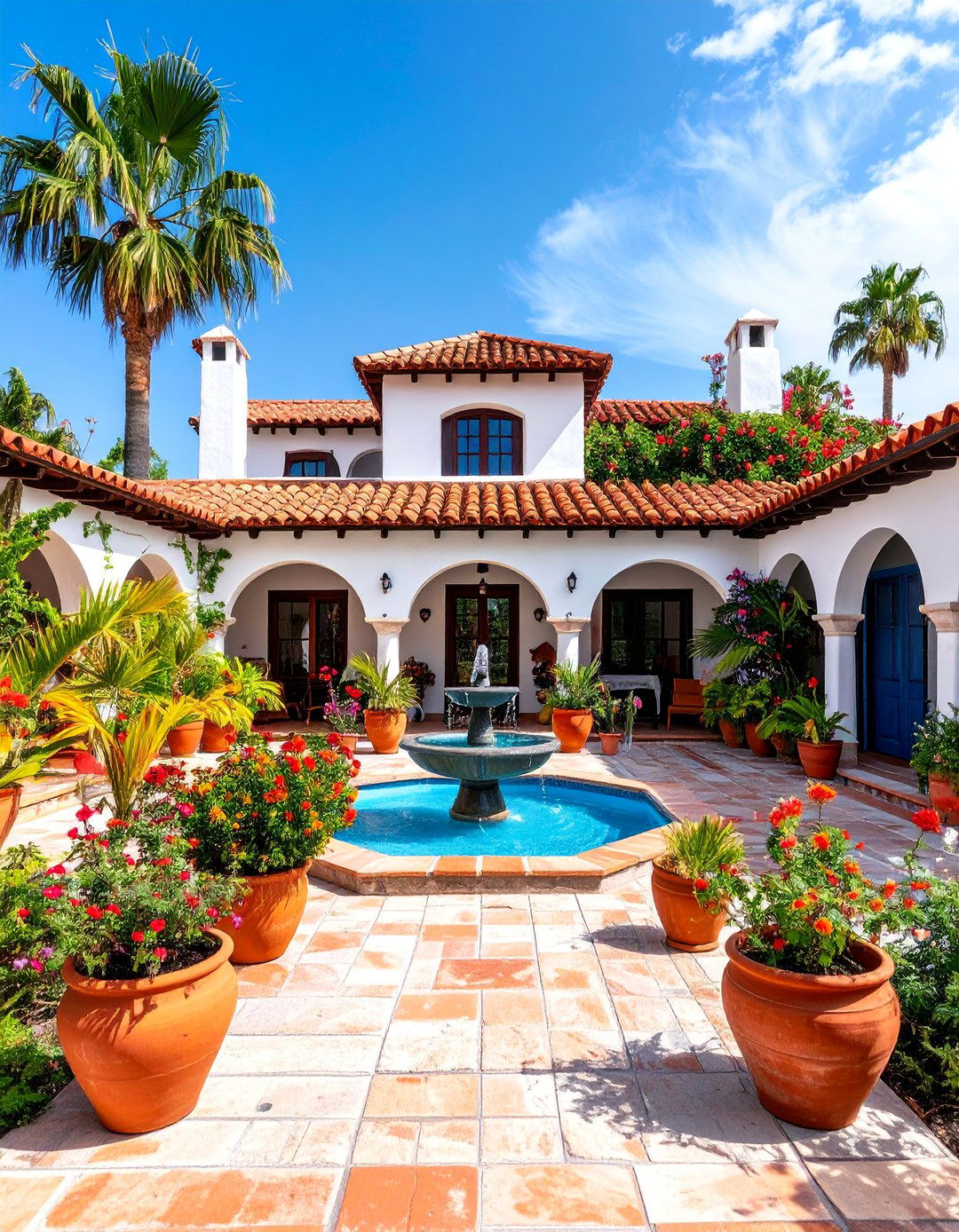
A traditional hacienda design centers around a magnificent interior courtyard that serves as the heart of family life. Thick adobe walls painted in crisp white stucco create a stunning contrast against terracotta roof tiles and dark wooden doors. The courtyard features hand-laid stone flooring with a central fountain surrounded by lush tropical plants in colorful ceramic pots. Rooms open directly onto covered walkways with exposed wooden beams and wrought iron details. This design emphasizes privacy and tranquility while providing natural cooling through the courtyard's airflow. The outdoor space becomes an extension of indoor living, perfect for dining, entertaining, and relaxing under the stars.
2. Spanish Colonial Villa with Red Clay Roof
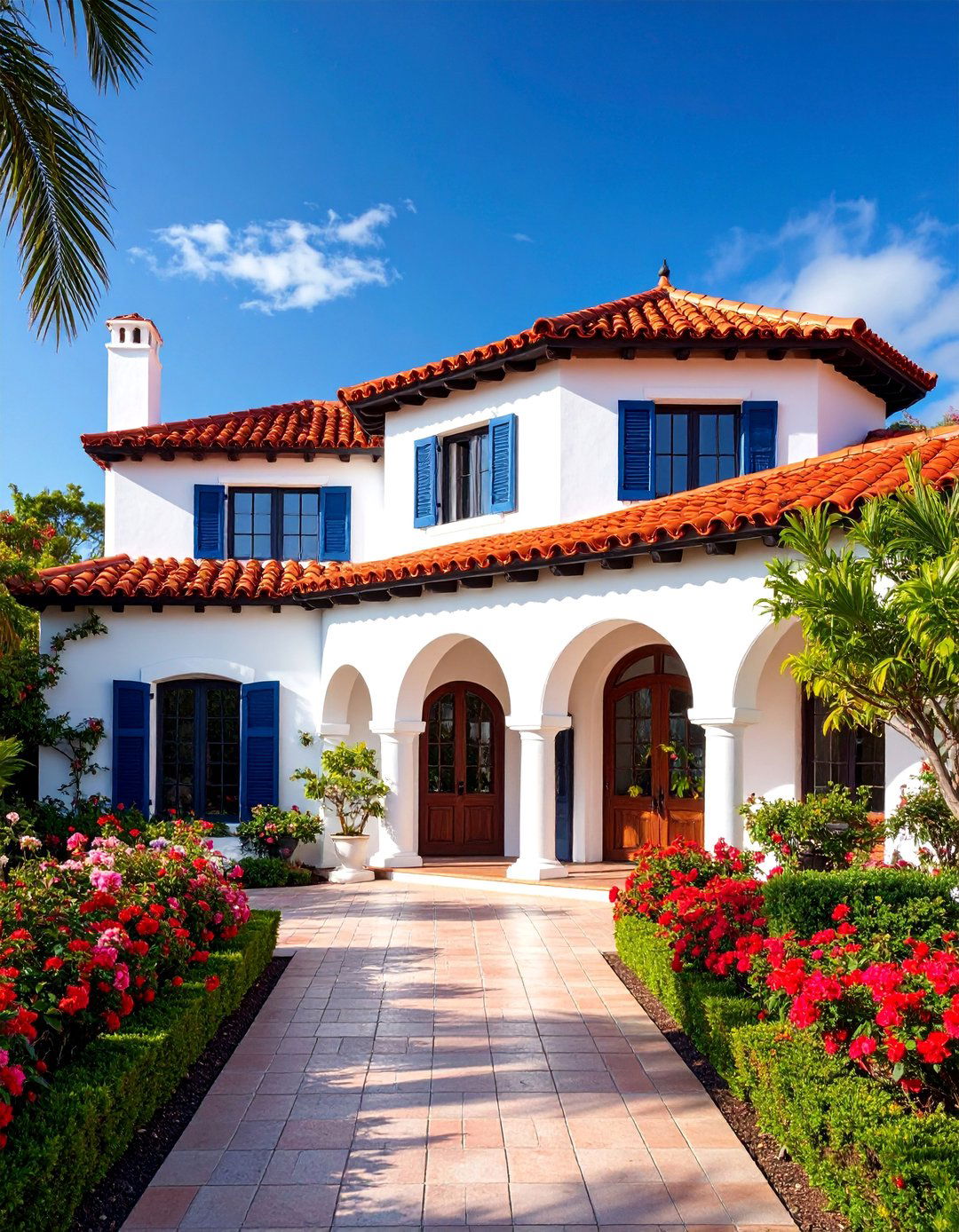
Spanish colonial villas showcase elegant simplicity through their distinctive red barrel-tile roofs and pristine white stucco exterior walls. Arched windows and doorways create graceful lines throughout the facade, while dark wooden shutters add authentic charm. The entrance features massive carved wooden doors with iron hardware leading to spacious interior rooms with high ceilings. Covered terraces with stone columns provide shaded outdoor living areas overlooking manicured gardens. Interior spaces flow seamlessly with terracotta tile floors and exposed wooden ceiling beams. This timeless design combines Mediterranean elegance with Mexican warmth, creating sophisticated yet comfortable living spaces ideal for both everyday life and formal entertaining.
3. Adobe House with Thick Thermal Walls
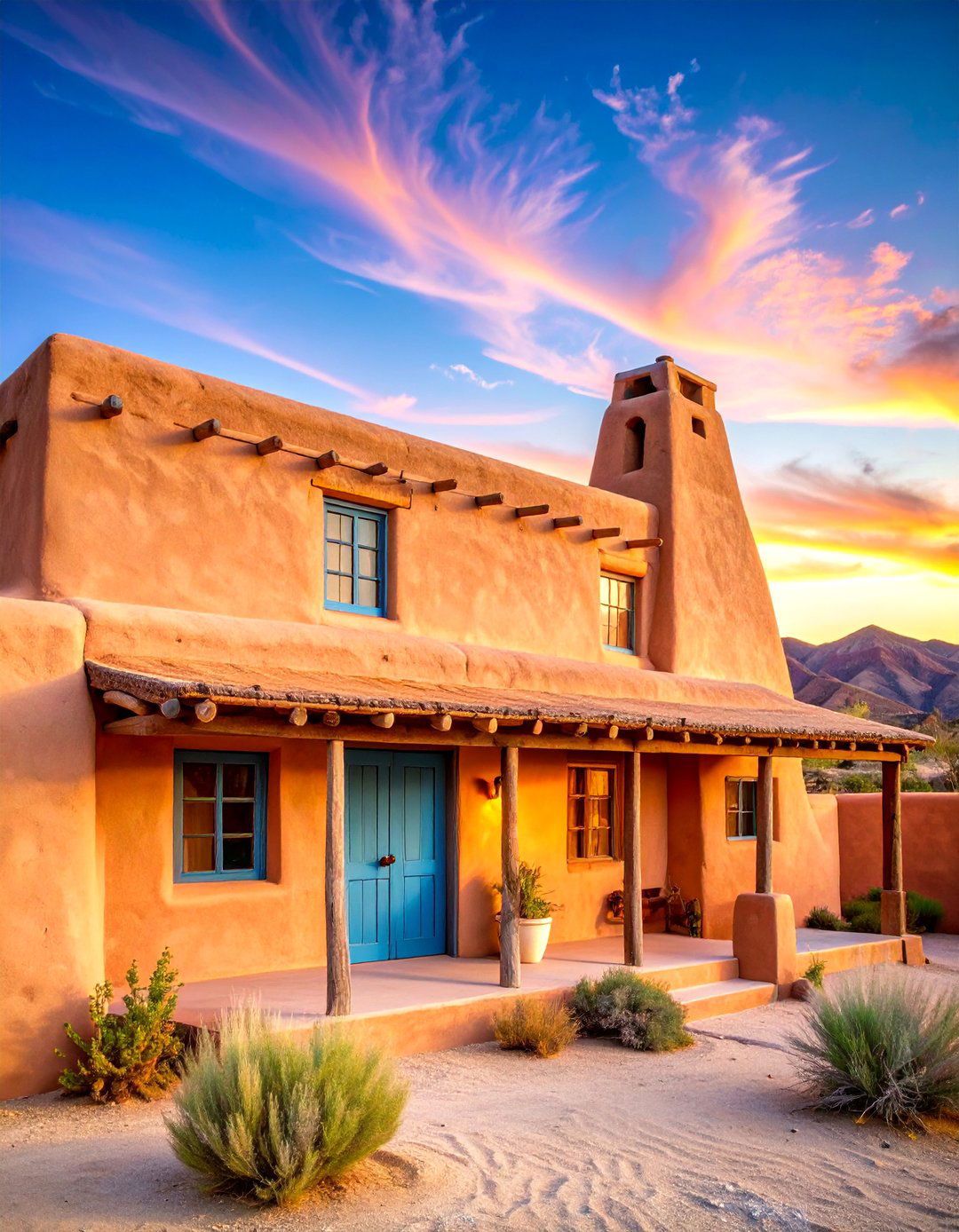
Adobe construction represents ancient building wisdom perfectly suited for hot climates through thick earthen walls that naturally regulate temperature. These substantial walls, often two feet thick, maintain cool interiors during scorching days while retaining warmth during cooler evenings. Small, strategically placed windows minimize heat gain while providing adequate natural light. Flat roofs with wooden vigas extending beyond the walls create shaded areas around the perimeter. Interior spaces feature smooth plastered walls in warm earth tones, wooden ceilings, and traditional tile floors. This sustainable design approach reduces energy consumption while creating comfortable, naturally climate-controlled living environments that connect residents with traditional building methods.
4. Contemporary Mexican House with Glass Walls
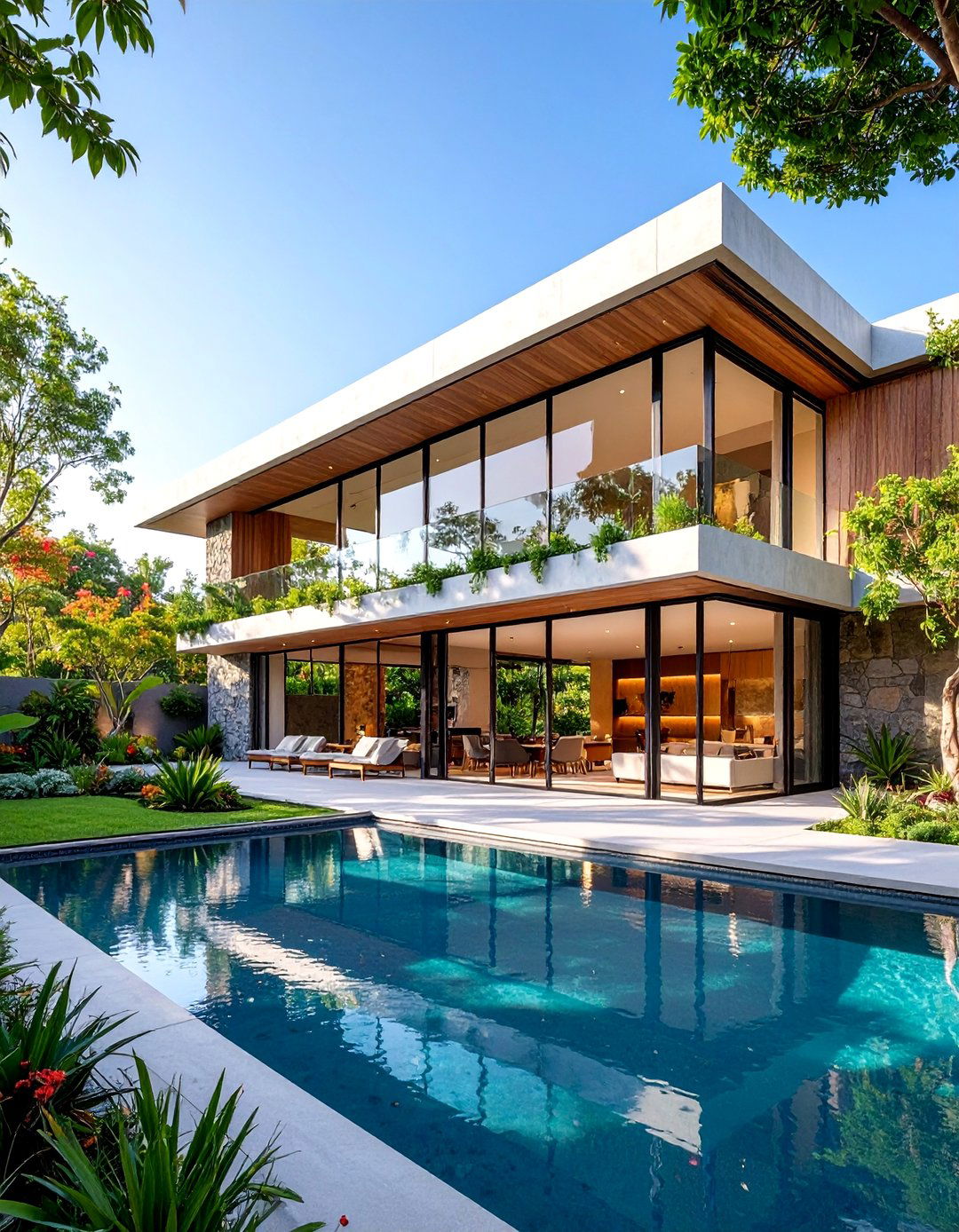
Modern Mexican architecture embraces transparency through floor-to-ceiling glass walls that blur boundaries between interior and exterior spaces. Clean geometric lines combine with traditional materials like natural stone and exposed concrete to create sophisticated contemporary living. Large sliding glass panels open completely to connect indoor rooms with outdoor terraces and gardens. Natural materials including local stone, hardwood, and steel create warm yet minimalist interiors. The design incorporates traditional elements like central courtyards and water features while embracing modern amenities and sustainable technologies. This approach honors Mexican architectural heritage while meeting contemporary lifestyle needs through innovative design solutions that celebrate light, space, and natural beauty.
5. Casita Guest House Design
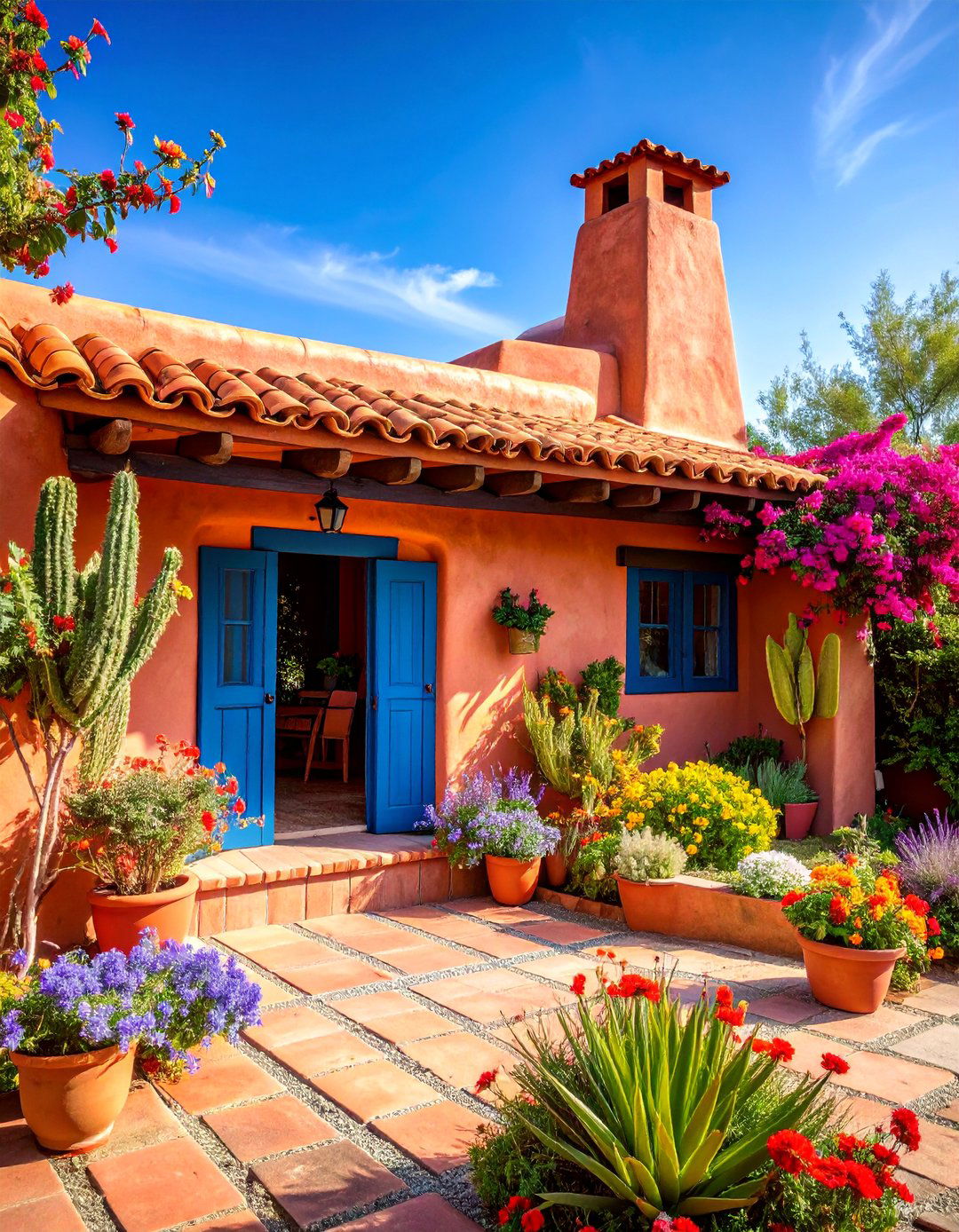
Casita guest houses embody the charming simplicity of traditional Mexican small-scale architecture through compact, efficient design that maximizes comfort. These single-story structures feature thick adobe or stucco walls with small windows that maintain privacy while providing natural light. Red tile roofs with generous overhangs create shaded outdoor areas perfect for relaxation. Interior spaces include a cozy bedroom, compact bathroom, and small sitting area with traditional furnishings. Rustic wooden beams, terra cotta floors, and handcrafted details create authentic charm. The casita opens onto a private patio with traditional Mexican tiles and potted plants, creating a perfect retreat for guests or family members seeking peaceful, independent accommodation.
6. Mexican House with Talavera Tile Features
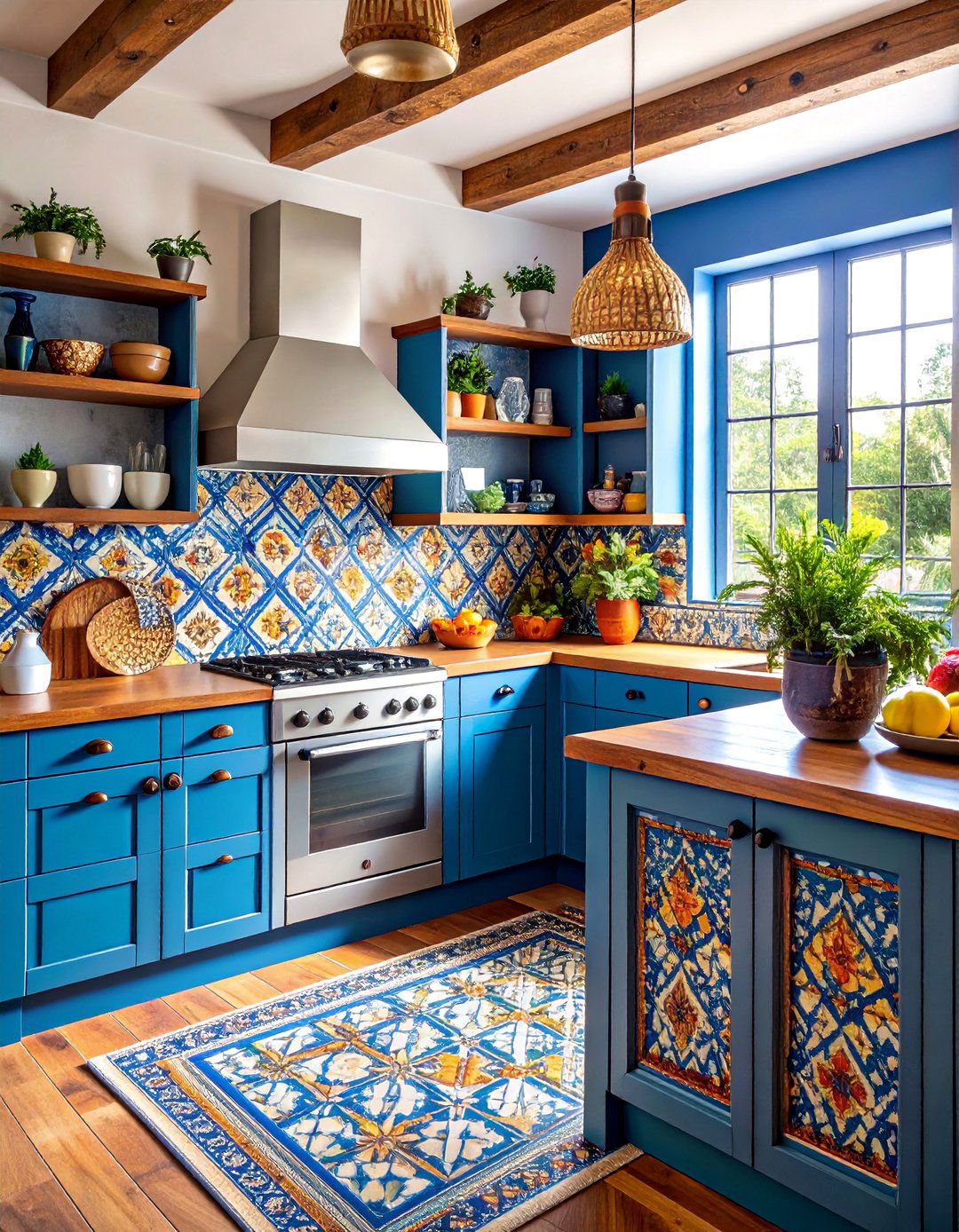
Talavera tile work transforms ordinary spaces into extraordinary showcases of Mexican artisanal craftsmanship through intricate hand-painted ceramic designs. Kitchens feature vibrant backsplashes with traditional blue and white patterns, while bathrooms showcase colorful accent walls with geometric motifs. Stair risers display collections of mixed patterns creating visual excitement throughout vertical circulation areas. Outdoor fountains and garden walls incorporate these beautiful tiles as focal points. Interior floors combine solid terracotta tiles with decorative Talavera borders that define different living areas. Each tile tells a story through traditional patterns passed down through generations of Mexican artisans, creating homes filled with cultural significance and artistic beauty that celebrates Mexico's rich ceramic heritage.
7. Hacienda with Outdoor Kitchen Courtyard
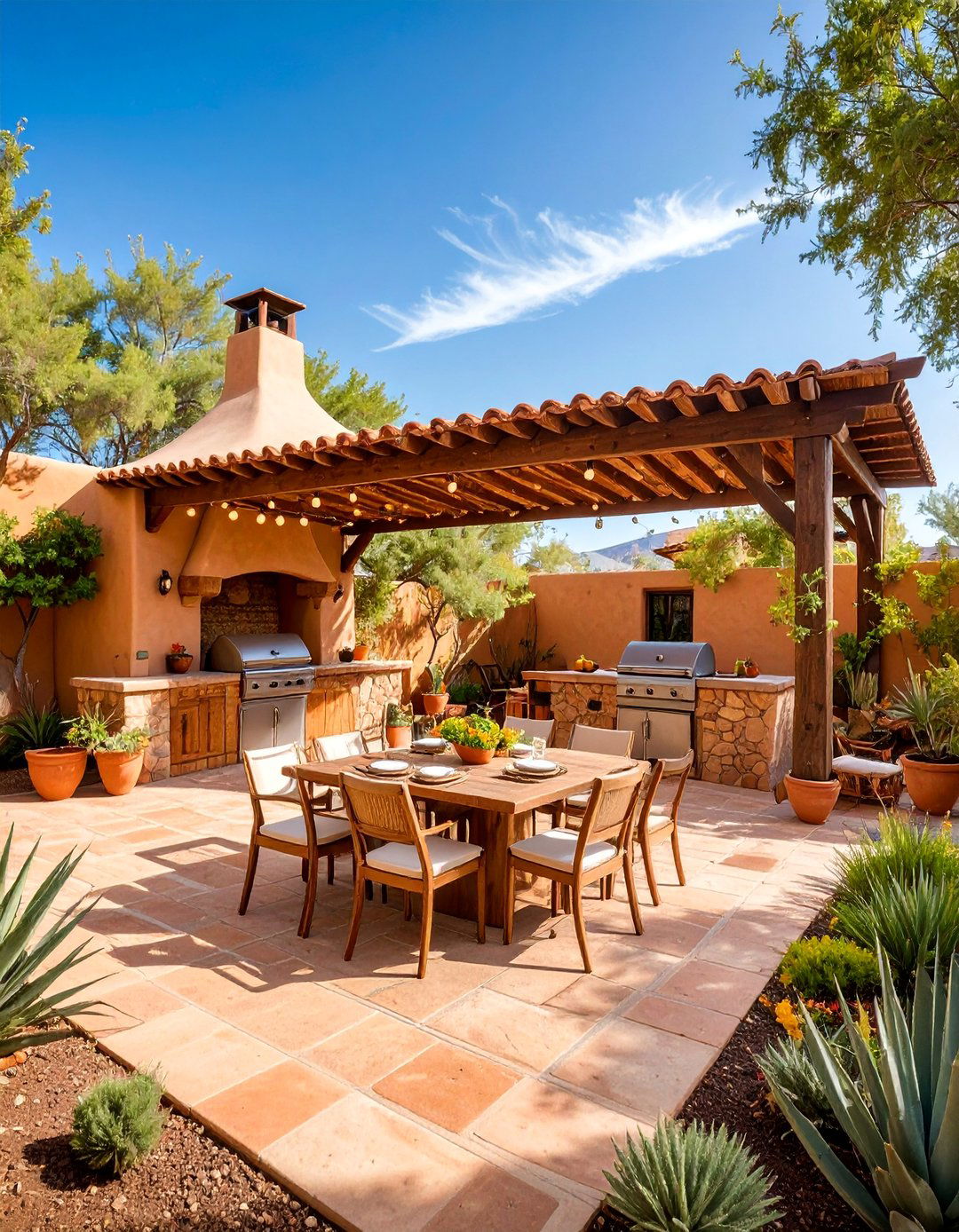
Outdoor cooking spaces celebrate Mexican culinary traditions through dedicated courtyard kitchens designed for family gatherings and entertaining. Covered ramadas with wooden post construction provide shelter while maintaining open-air cooking environments. Traditional clay chimeneas or modern stone barbecues become focal points surrounded by preparation areas with Talavera tile countertops. Dining areas feature rustic wooden tables with wrought iron details under pergolas covered with climbing vines. Storage areas house traditional pottery and serving pieces while nearby herb gardens provide fresh ingredients. This design creates the perfect environment for preparing traditional Mexican dishes while entertaining family and friends in authentic outdoor settings that honor cultural cooking traditions.
8. Colonial House with Arched Doorways
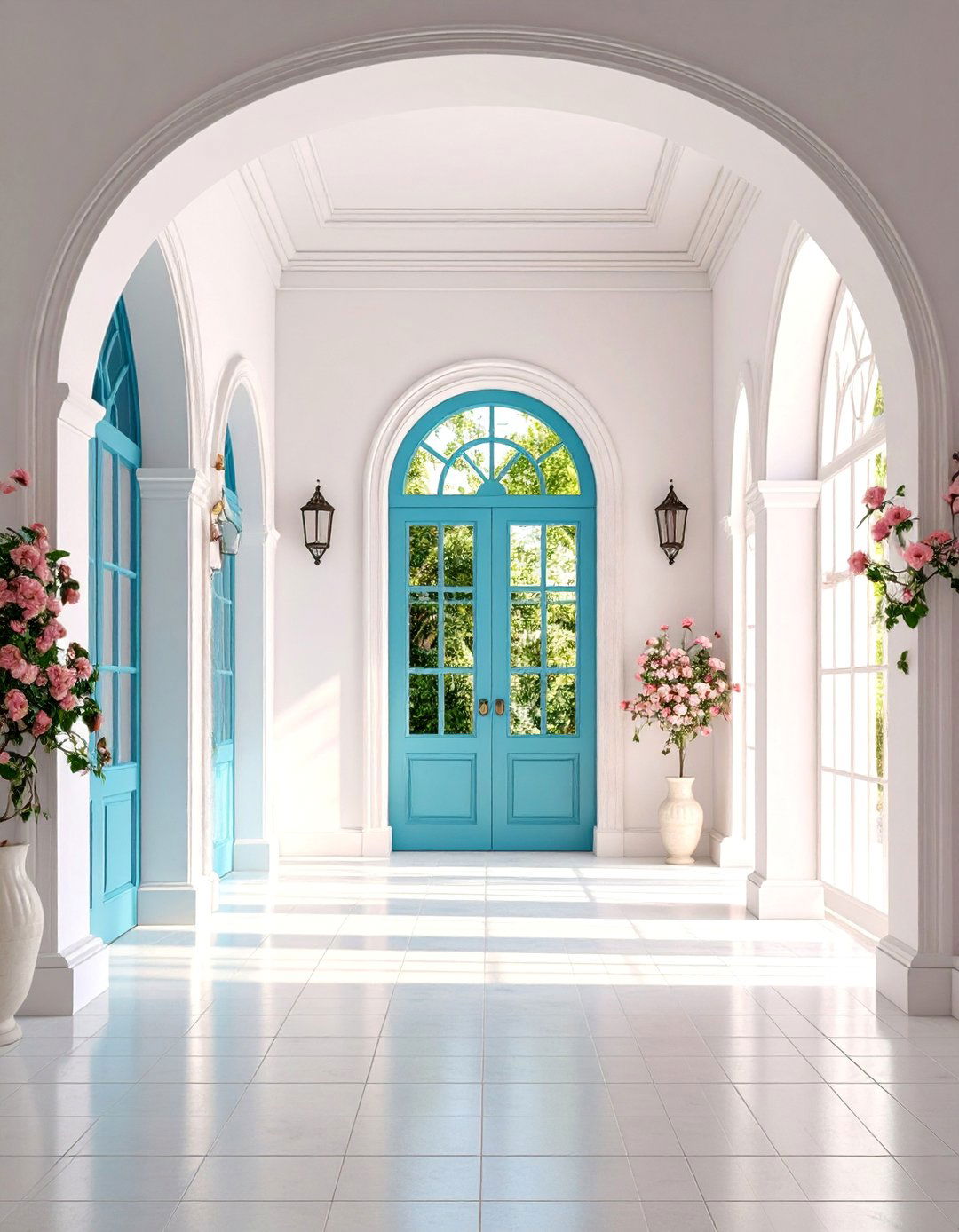
Graceful arched openings define Spanish colonial architecture through elegant curves that create visual flow between interior and exterior spaces. These distinctive arches frame doorways, windows, and covered walkways while supporting traditional construction methods. Interior archways separate living areas without closing off spaces, maintaining open sight lines throughout the home. Exterior arches create covered porticos and loggias that provide shaded outdoor living areas. Traditional materials including hand-forged iron gates, carved wooden doors, and natural stone complement the curved lines. This architectural feature adds sophistication and Old World charm while providing practical benefits including structural support and natural ventilation that keeps interiors comfortable in warm climates.
9. Modern Mexican with Indoor-Outdoor Living
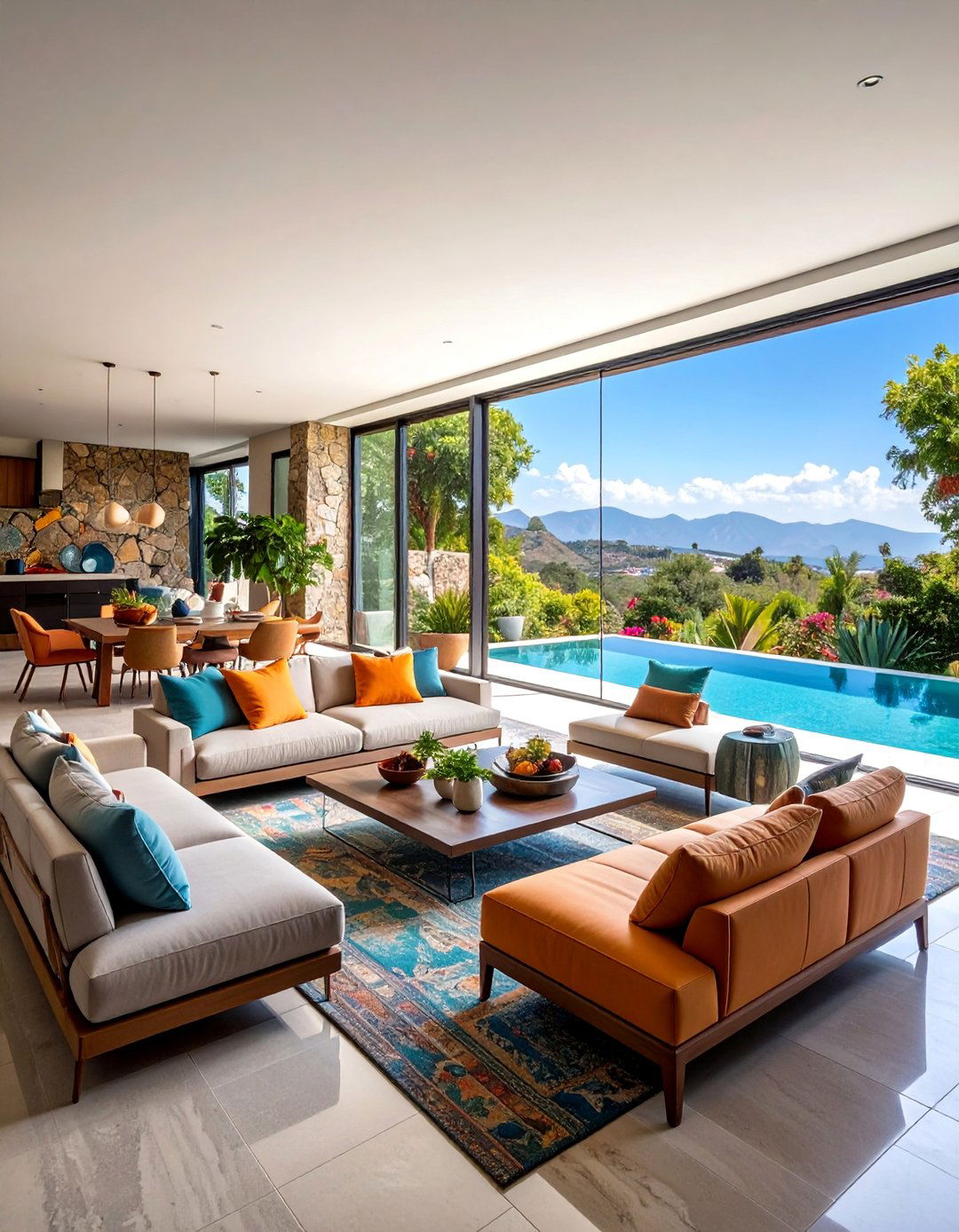
Contemporary Mexican design prioritizes seamless connections between interior and exterior spaces through innovative architectural solutions. Disappearing glass walls create flexible living areas that adapt to weather and lifestyle needs. Interior courtyards bring natural light deep into home plans while providing private outdoor space. Rooftop terraces expand living areas skyward with panoramic views and outdoor kitchens. Natural materials including local stone, sustainable woods, and polished concrete create cohesive design language throughout indoor and outdoor areas. Modern amenities integrate with traditional elements like water features and native plantings. This approach creates homes perfectly suited to Mexico's climate while embracing contemporary lifestyle preferences for flexibility and connection with nature.
10. Traditional Adobe with Exposed Wooden Beams
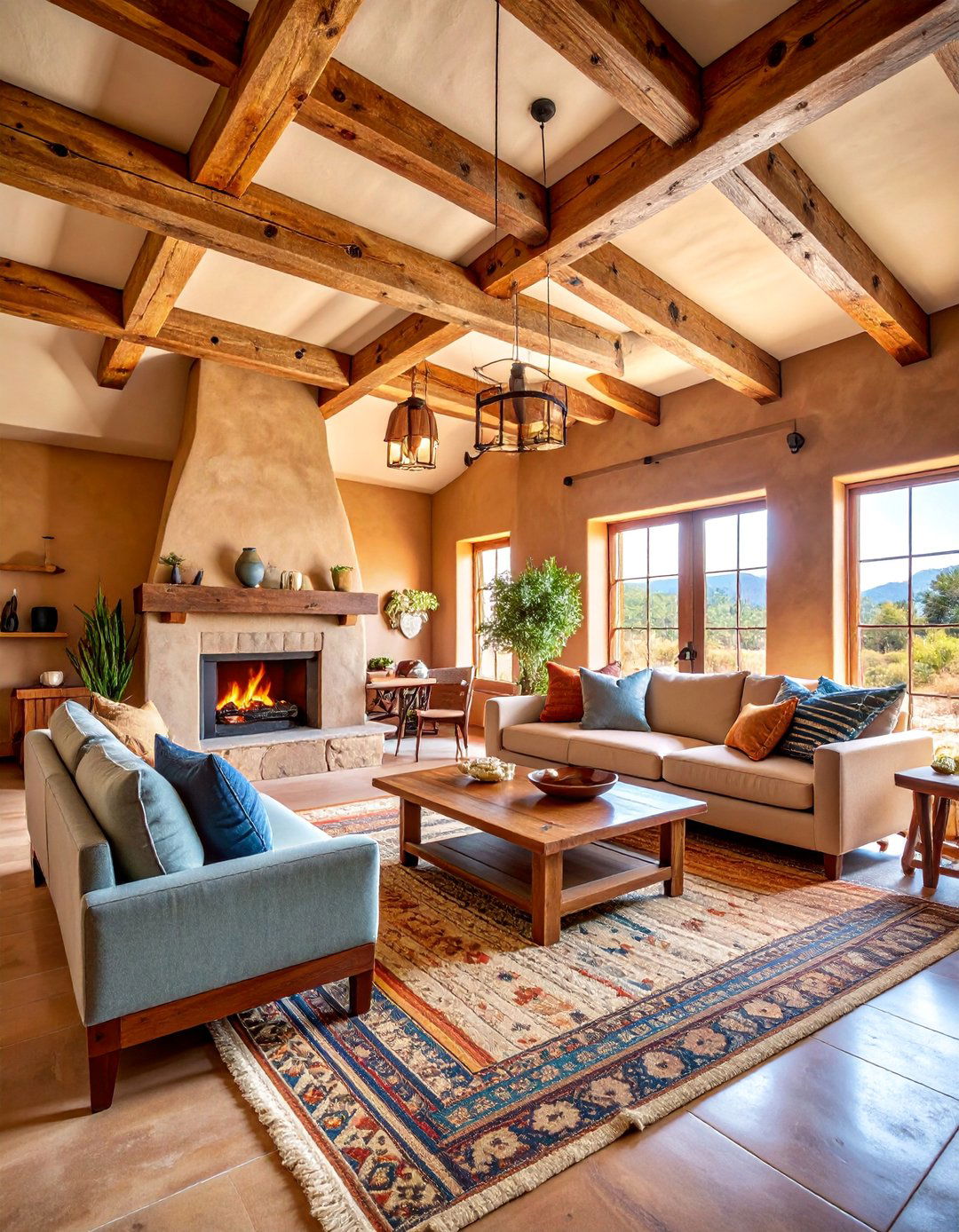
Exposed vigas showcase traditional Mexican construction methods through massive wooden ceiling beams that provide both structural support and visual drama. These hand-hewn timbers, often left in natural finish, create rustic elegance against smooth plastered walls. Smaller latillas between main beams add textural interest while supporting roof systems. Interior spaces gain height and character through these prominent structural elements that emphasize handcrafted construction. Traditional adobe walls complement wooden elements through earth-tone finishes that highlight natural materials. Fireplaces with traditional designs provide gathering spaces while maintaining authentic architectural character. This time-tested combination creates warm, inviting interiors that celebrate Mexican building traditions while providing comfortable modern living spaces.
11. Mexican House with Fountain Courtyard
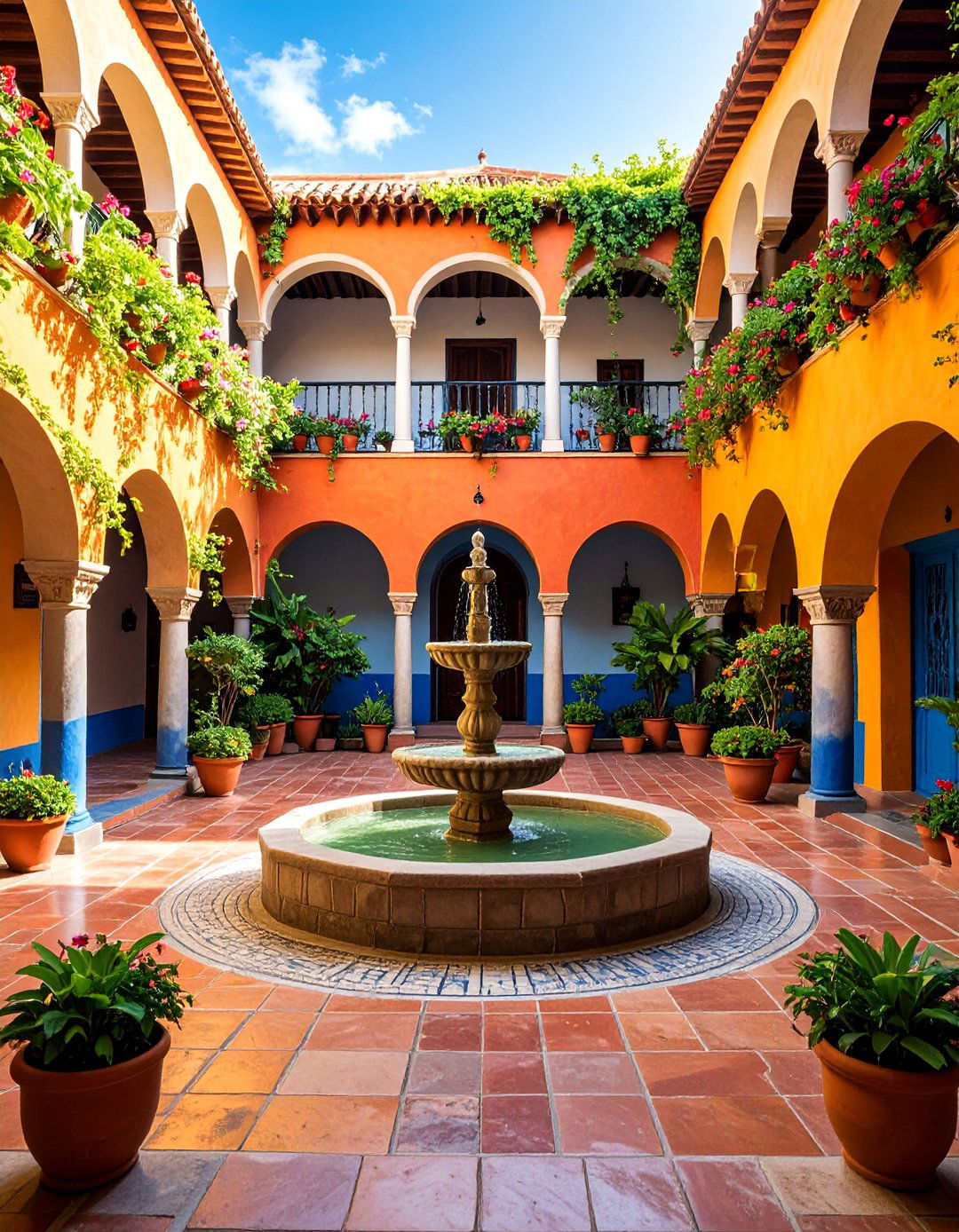
Central fountains create focal points for traditional Mexican courtyards while providing cooling effects and soothing sounds throughout living spaces. Hand-carved stone fountains showcase artisanal craftsmanship through intricate details and traditional motifs. Surrounding areas feature natural stone paving with built-in planters filled with tropical plants and colorful flowers. Covered walkways with arched openings frame views of the fountain while providing circulation between rooms. Outdoor seating areas encourage family gatherings around the water feature during warm evenings. Traditional Talavera tiles accent fountain bases and surrounding walls with vibrant patterns. This design creates tranquil environments that honor Mexican traditions while providing practical cooling benefits and beautiful focal points for outdoor living areas.
12. Spanish Style with Wrought Iron Details
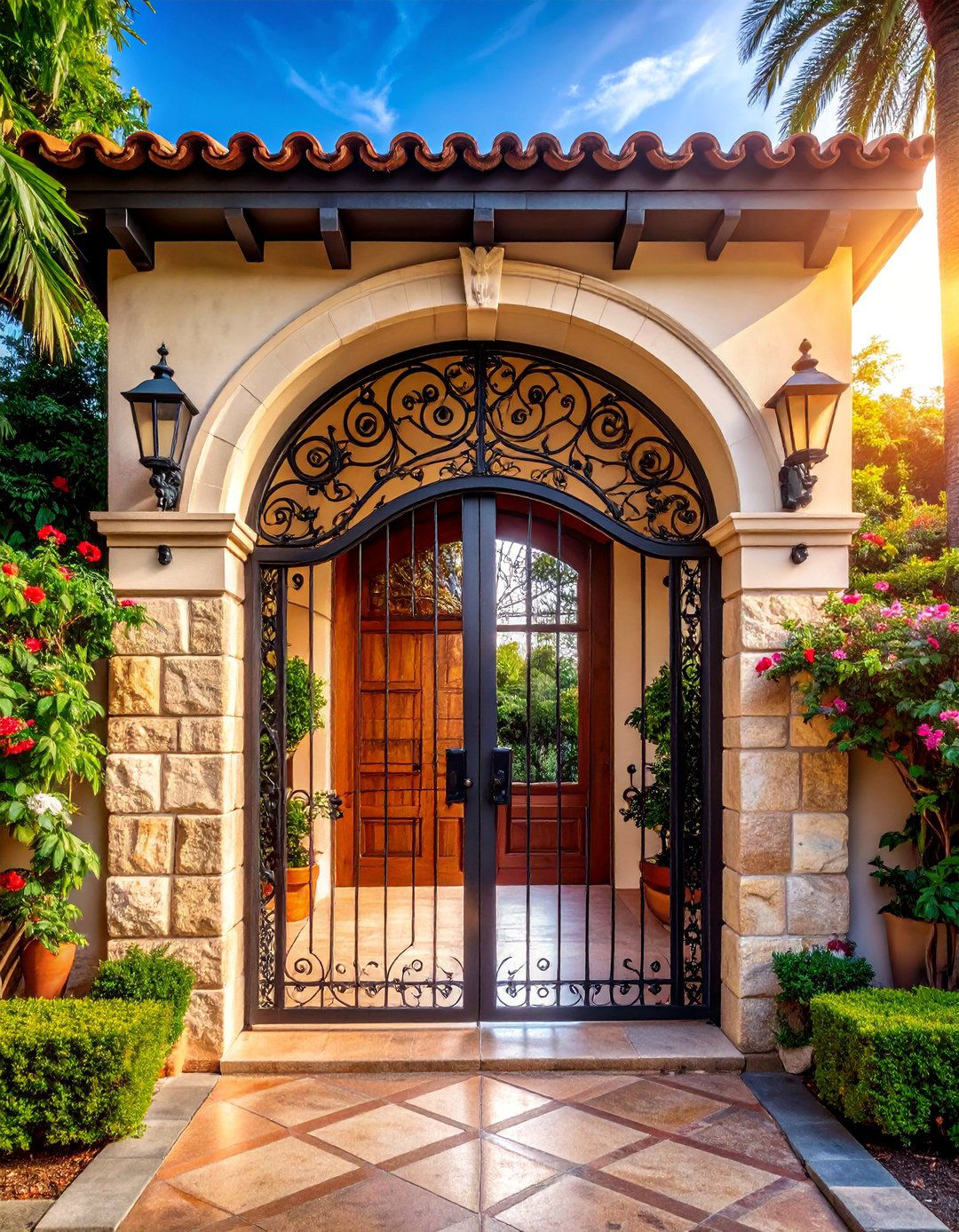
Decorative ironwork adds authentic Spanish colonial character through handcrafted details that enhance both security and beauty. Ornate window grilles feature traditional patterns while providing protection and privacy. Entrance gates create dramatic first impressions through scrollwork designs and custom family crests or monograms. Interior staircases showcase wrought iron railings with traditional motifs that complement other architectural elements. Light fixtures including chandeliers and sconces feature hand-forged iron construction with traditional finishes. Balconies and terraces gain elegance through decorative iron railings that frame outdoor views. These handcrafted details connect homes to centuries of Spanish metalworking traditions while adding sophisticated touches that enhance architectural authenticity and create lasting beauty through skilled artisanal craftsmanship.
13. Contemporary Hacienda with Pool
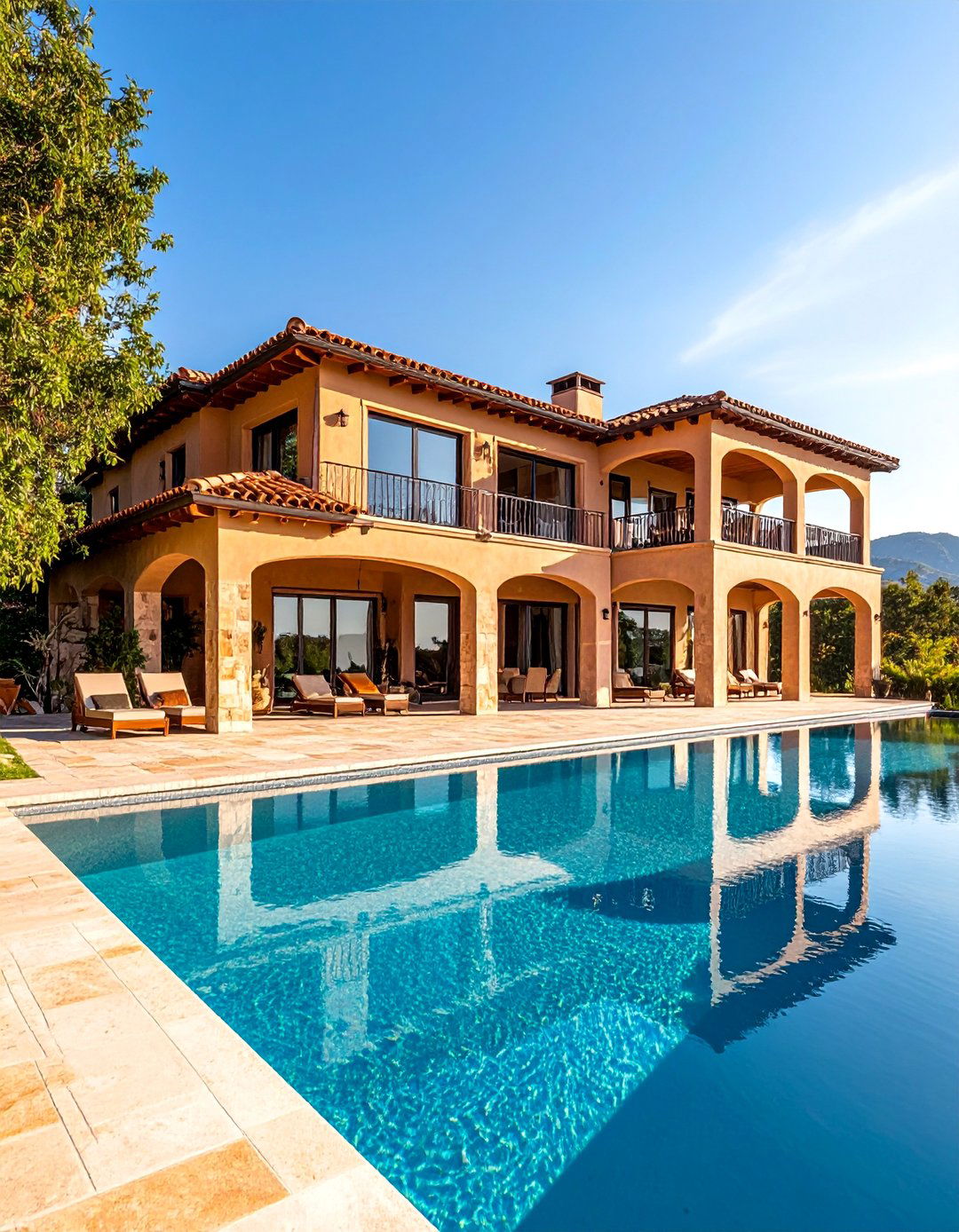
Modern hacienda design incorporates resort-style amenities while maintaining traditional architectural character through thoughtful integration of contemporary features. Swimming pools become central courtyard elements surrounded by covered loggias and outdoor living areas. Natural stone decking and infinity edges create sophisticated water features that complement traditional materials. Poolside casitas provide changing areas and storage while maintaining architectural consistency with main structures. Outdoor kitchens and dining areas extend entertaining capabilities while landscape design incorporates native plants and traditional water features. This approach creates luxurious family compounds that honor hacienda traditions while providing modern comfort and entertainment options perfect for Mexico's year-round outdoor living climate.
14. Mexican Design with Vibrant Color Palette

Bold color schemes celebrate Mexican artistic traditions through carefully curated palettes that energize living spaces while maintaining sophisticated balance. Exterior walls showcase warm terracotta, sunny yellow, and ocean blue accents against neutral base colors. Interior rooms feature accent walls in deep jewel tones complemented by colorful textiles and handcrafted accessories. Traditional Talavera pottery and ceramic tiles introduce pattern and color throughout kitchens and bathrooms. Furniture upholstery and window treatments incorporate traditional Mexican textile patterns in contemporary applications. Garden areas extend color themes through flowering plants and painted pottery. This vibrant approach creates joyful environments that reflect Mexican cultural celebration while maintaining livability through thoughtful color balance and natural material grounding.
15. Colonial House with Mosaic Tile Floors
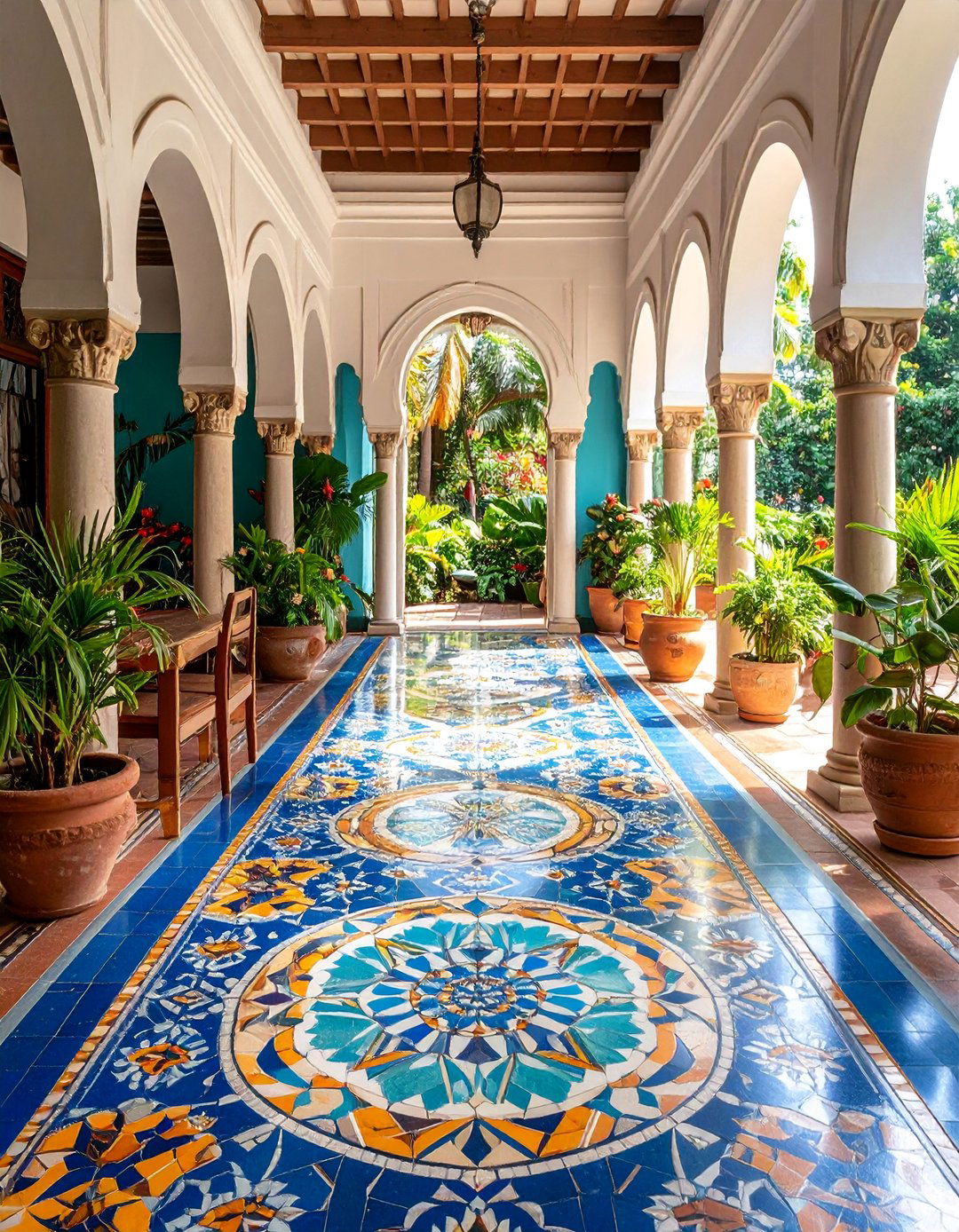
Intricate mosaic floors showcase traditional Mexican craftsmanship through detailed patterns that transform functional surfaces into artistic statements. Entry halls feature geometric designs inspired by Aztec and Spanish colonial motifs using natural stone and ceramic tiles. Living areas incorporate border patterns that define furniture groupings while maintaining open floor plans. Bathroom floors display elaborate designs that complement Talavera wall tiles through coordinated color schemes. Outdoor terraces extend mosaic treatments to exterior spaces using weather-resistant materials. Kitchen floors combine practical considerations with decorative appeal through slip-resistant surfaces featuring traditional patterns. These handcrafted floors require skilled artisans who preserve centuries-old techniques while creating unique artistic expressions that enhance home beauty and cultural authenticity.
16. Adobe Style with Desert Landscaping

Desert-adapted landscaping complements adobe architecture through native plants that thrive in arid conditions while creating beautiful outdoor environments. Succulent gardens feature dramatic agave, barrel cactus, and flowering desert plants arranged in naturalistic compositions. Gravel pathways and stone mulch reduce water requirements while providing clean, attractive groundcover. Shade structures including ramadas and pergolas create comfortable outdoor living areas while supporting drought-tolerant climbing plants. Water features use efficient designs that minimize evaporation while providing cooling effects. This sustainable approach reduces maintenance requirements while creating authentic Mexican landscape settings that celebrate regional ecology through plants and materials adapted to local climate conditions.
17. Mexican House with Terracotta Elements
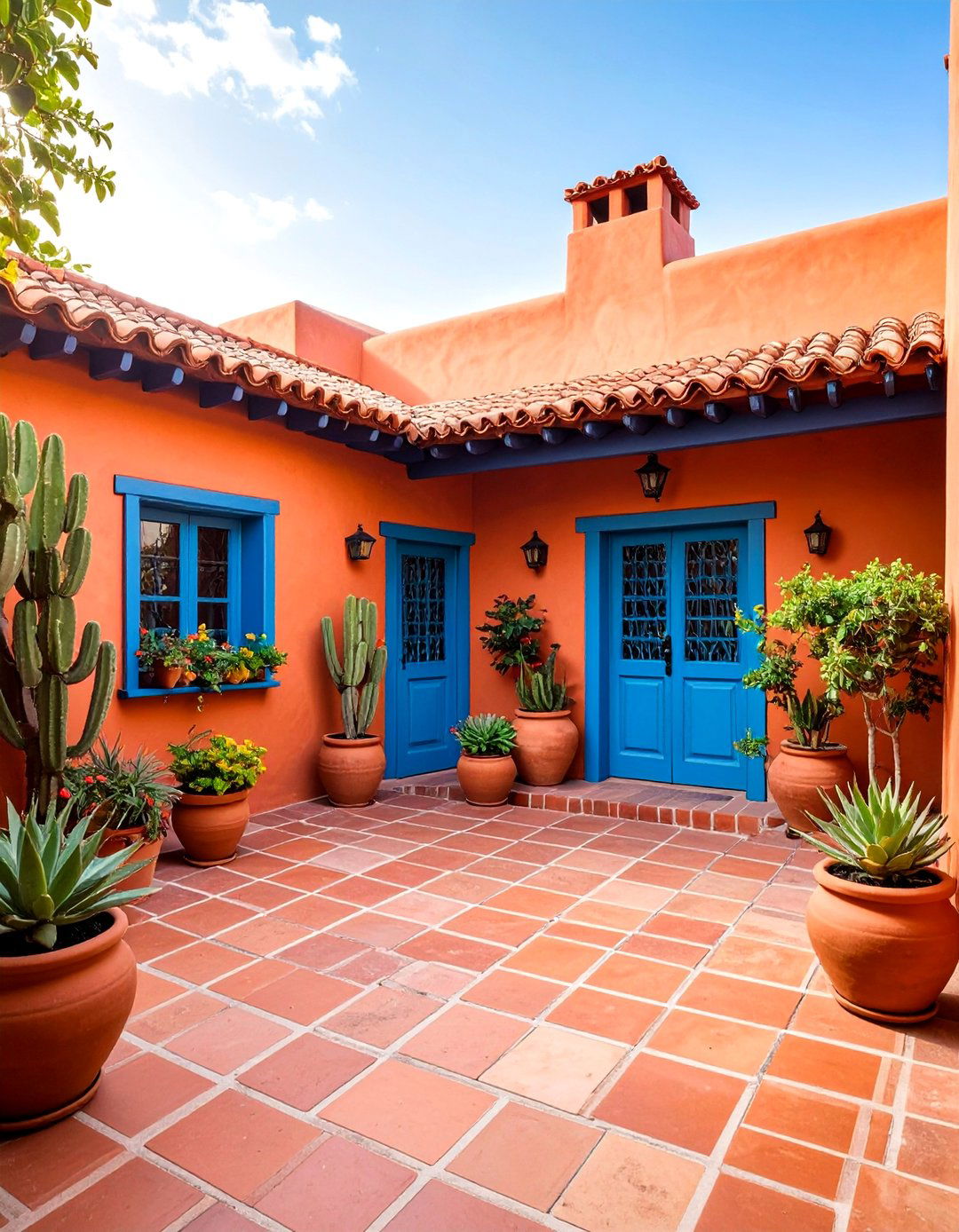
Terracotta clay products create unified design themes throughout Mexican homes while showcasing traditional ceramic craftsmanship and earth-friendly materials. Roof tiles provide weather protection while creating distinctive architectural character through warm reddish-brown colors and curved profiles. Floor tiles offer practical beauty in high-traffic areas while maintaining authentic Mexican appearance through handmade irregularities and natural color variations. Decorative pottery including large ollas and planters create focal points in gardens and interior spaces. Wall sconces and architectural details incorporate terracotta elements that complement other natural materials. This comprehensive use of clay products creates cohesive design themes while supporting traditional Mexican pottery industries through authentic material choices that age beautifully over time.
18. Hacienda with Stone and Stucco Walls
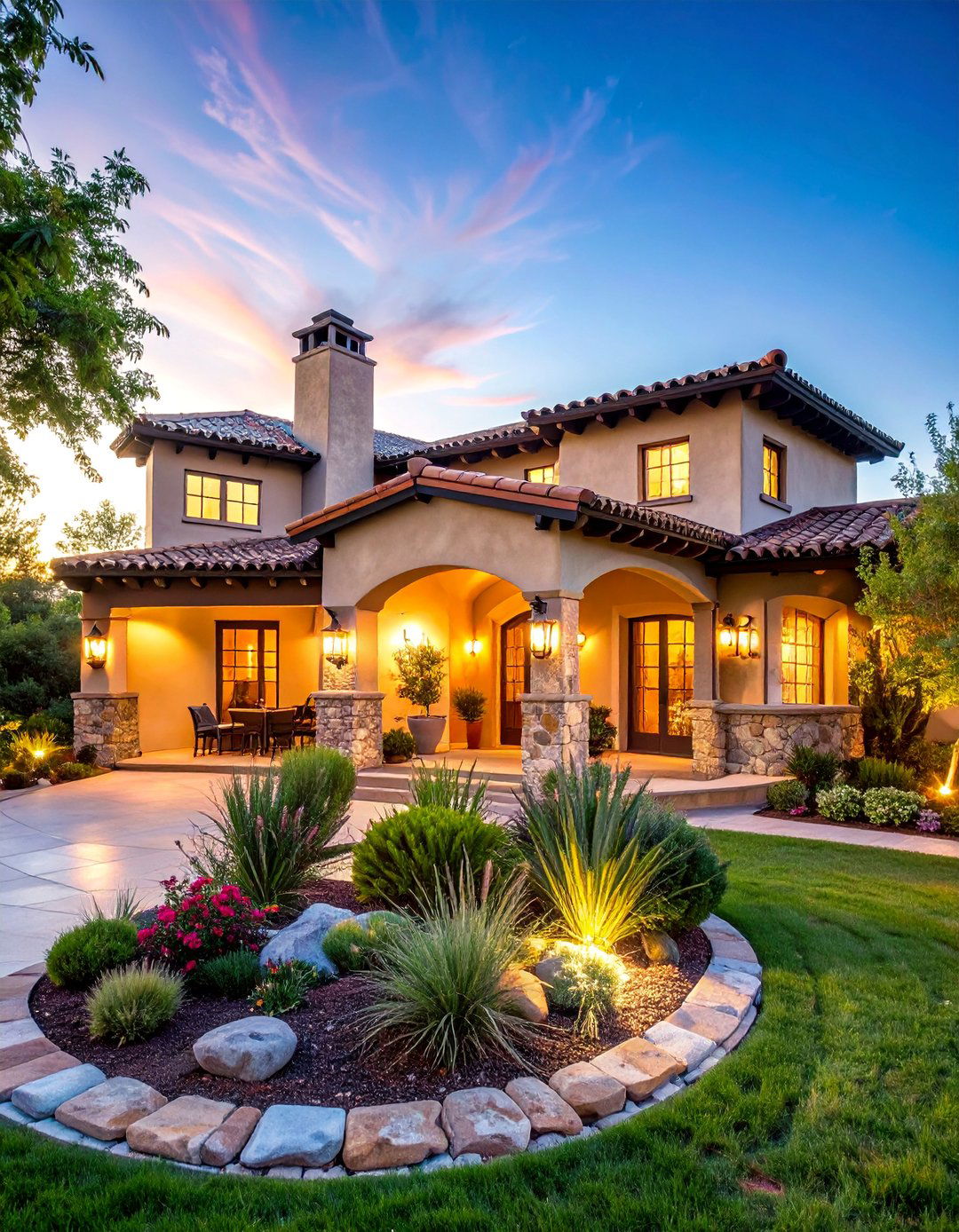
Natural stone foundations and lower walls provide structural stability while creating visual weight that grounds hacienda architecture in landscape settings. Smooth stucco upper walls offer contrast through refined textures and lighter colors that reflect heat effectively. This traditional combination provides practical benefits including moisture protection, thermal mass, and durability while creating distinctive architectural character. Stone selection often features local materials that connect buildings to regional geology through color and texture. Stucco finishes allow for color customization while providing weather protection over adobe or masonry construction. Architectural details including window surrounds and door frames often feature stone accents that enhance visual interest while honoring traditional construction methods that have proven effective over centuries.
19. Colonial Design with Wooden Shutters
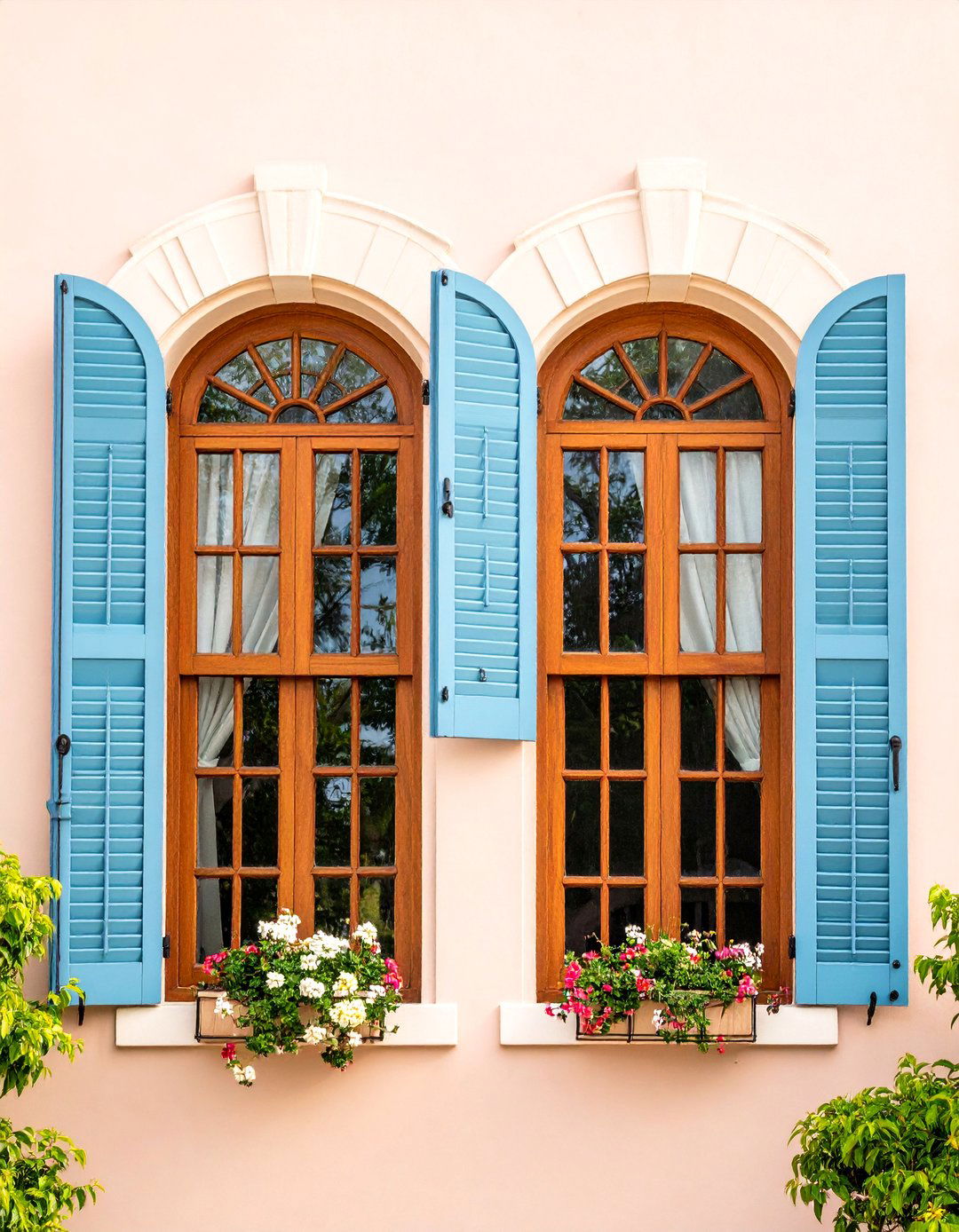
Traditional wooden shutters provide both practical function and authentic architectural character through handcrafted details that enhance window openings. Solid wood construction offers security, privacy, and weather protection while maintaining traditional appearance through natural finishes and iron hardware. Interior spaces benefit from adjustable light control and ventilation options that improve comfort without mechanical systems. Exterior elevations gain depth and shadow lines that enhance architectural interest while shutters provide color accents through painted finishes. Traditional joinery methods and proportions maintain historical accuracy while modern hardware improvements enhance functionality. This time-tested feature connects homes to colonial traditions while providing practical benefits that improve daily living comfort through natural climate control and security options.
20. Modern Mexican with Natural Materials
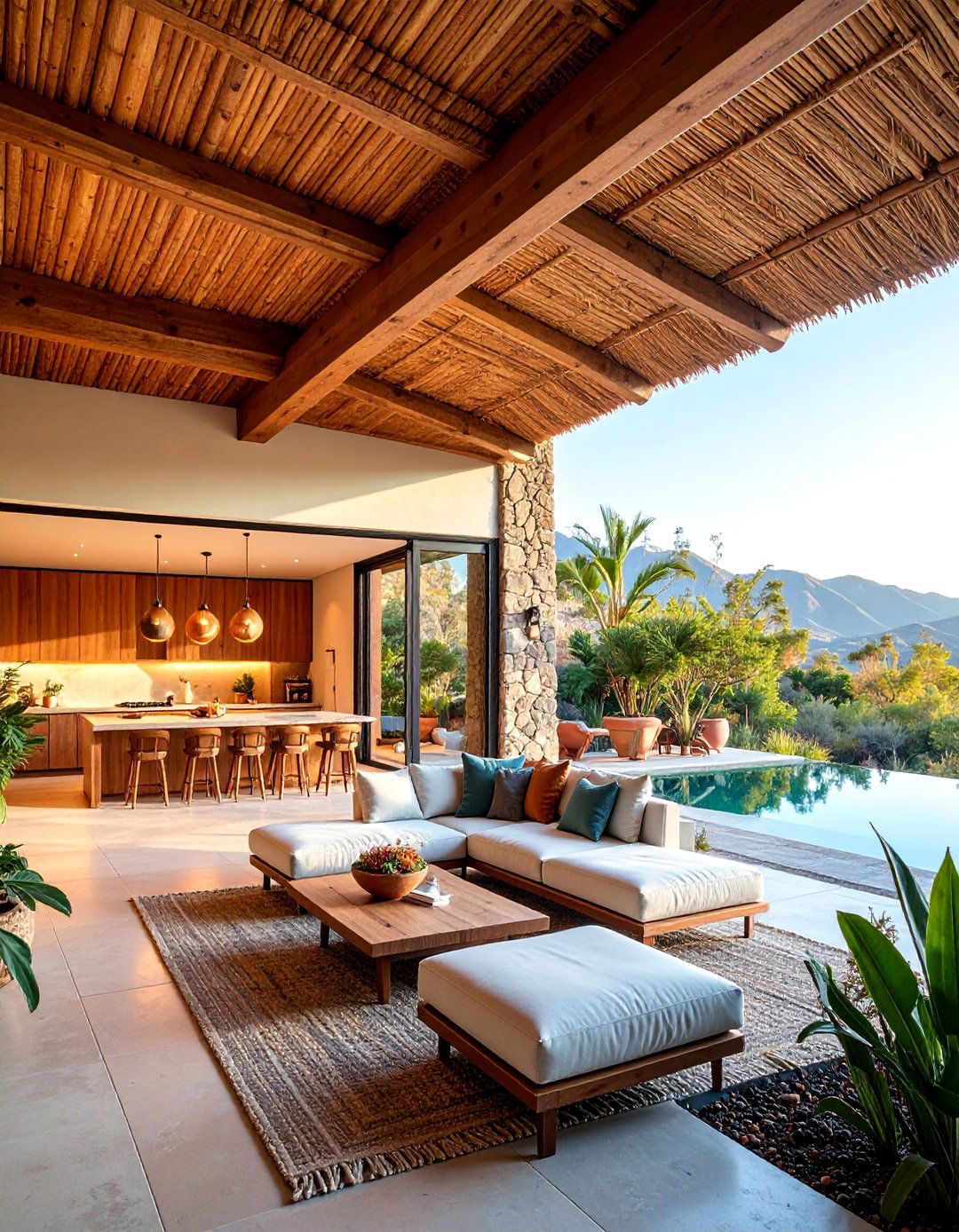
Contemporary Mexican architecture emphasizes sustainable local materials that reduce environmental impact while creating beautiful, authentic living spaces. Volcanic stone walls provide thermal mass and distinctive textures that connect buildings to regional geology. Reclaimed tropical hardwoods offer rich colors and grains in flooring and structural elements. Bamboo applications include ceiling treatments and privacy screens that add textural interest. Natural fiber textiles and furnishings complement architectural materials through coordinated earth-tone palettes. These material choices support local economies while creating healthy indoor environments free from synthetic finishes. This approach honors Mexican traditions of using available local resources while meeting contemporary performance standards for comfort, durability, and environmental responsibility.
21. Traditional House with Clay Roof Tiles
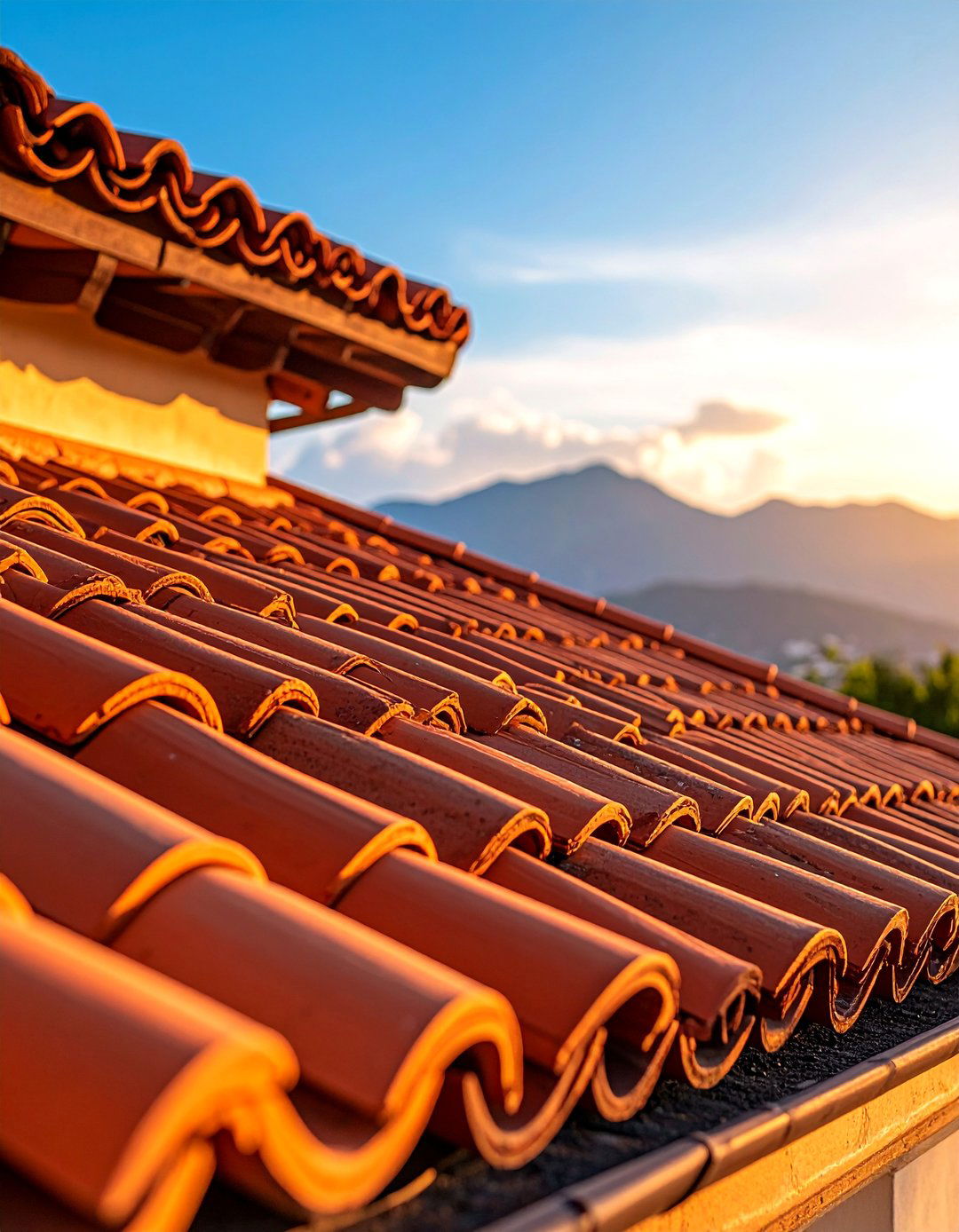
Curved clay roof tiles define Mexican architectural character while providing excellent weather protection through time-tested designs that have evolved over centuries. Traditional manufacturing methods create natural color variations and surface textures that age beautifully while maintaining structural integrity. Installation techniques allow for thermal expansion while providing secure attachment that withstands wind and seismic forces. Roof profiles created by curved tiles add visual interest through shadow lines and textural variety. Gutters and downspouts integrate discretely while managing rainwater runoff effectively. This roofing system requires skilled installation but provides decades of reliable service while maintaining authentic appearance that connects homes to Spanish colonial and indigenous building traditions that prioritize durability and climate appropriateness.
22. Mexican Style with Carved Wooden Doors
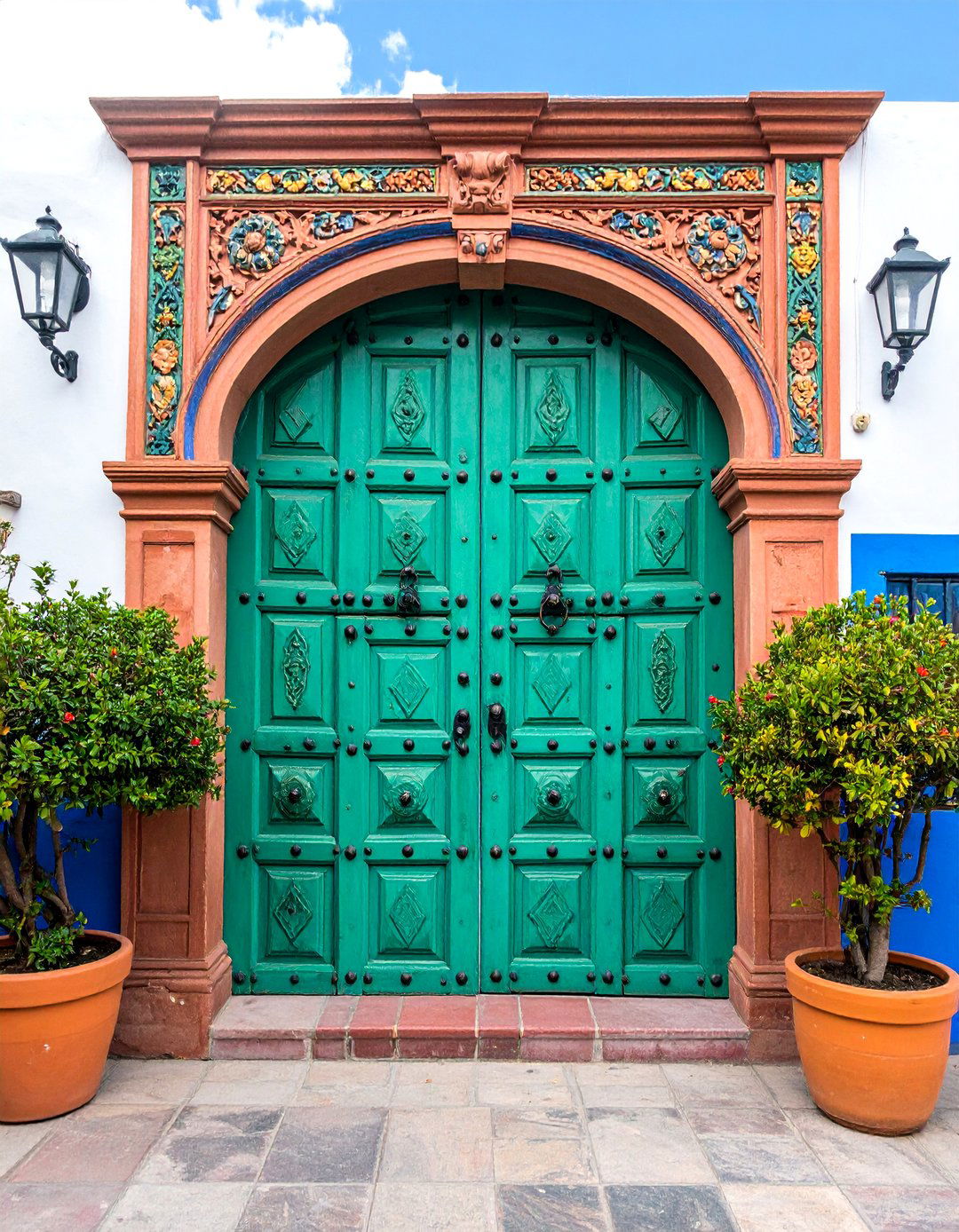
Handcrafted wooden doors create dramatic entrances while showcasing traditional Mexican woodworking skills through intricate carved details and robust construction. Solid wood construction using tropical hardwoods provides security and longevity while carved panels display traditional motifs including geometric patterns and natural themes. Iron hardware including hinges, locks, and decorative studs complement wooden elements through traditional blacksmithing techniques. Door surrounds often feature stone or tile accents that enhance the entrance presentation. Interior doors continue carved themes throughout homes while room-specific designs reflect function and importance. These architectural features require skilled artisans but create lasting beauty and cultural authenticity that enhances home value while connecting residents to Mexican craftsmanship traditions.
23. Hacienda with Multiple Courtyards

Large hacienda compounds feature multiple courtyards that serve different functions while maintaining overall architectural unity through consistent materials and design themes. Entry courtyards provide dramatic arrival experiences with fountains and formal plantings. Private family courtyards offer intimate spaces for daily activities including dining and relaxation. Service courtyards accommodate practical functions including laundry and storage while maintaining attractive environments. Connecting walkways with covered galleries protect circulation during weather while providing opportunities for architectural details. Each courtyard develops unique character through specialized functions while contributing to overall estate composition. This traditional arrangement provides privacy, security, and climate control while creating beautiful outdoor living environments that accommodate large extended families and frequent entertaining.
24. Contemporary Adobe with Solar Elements
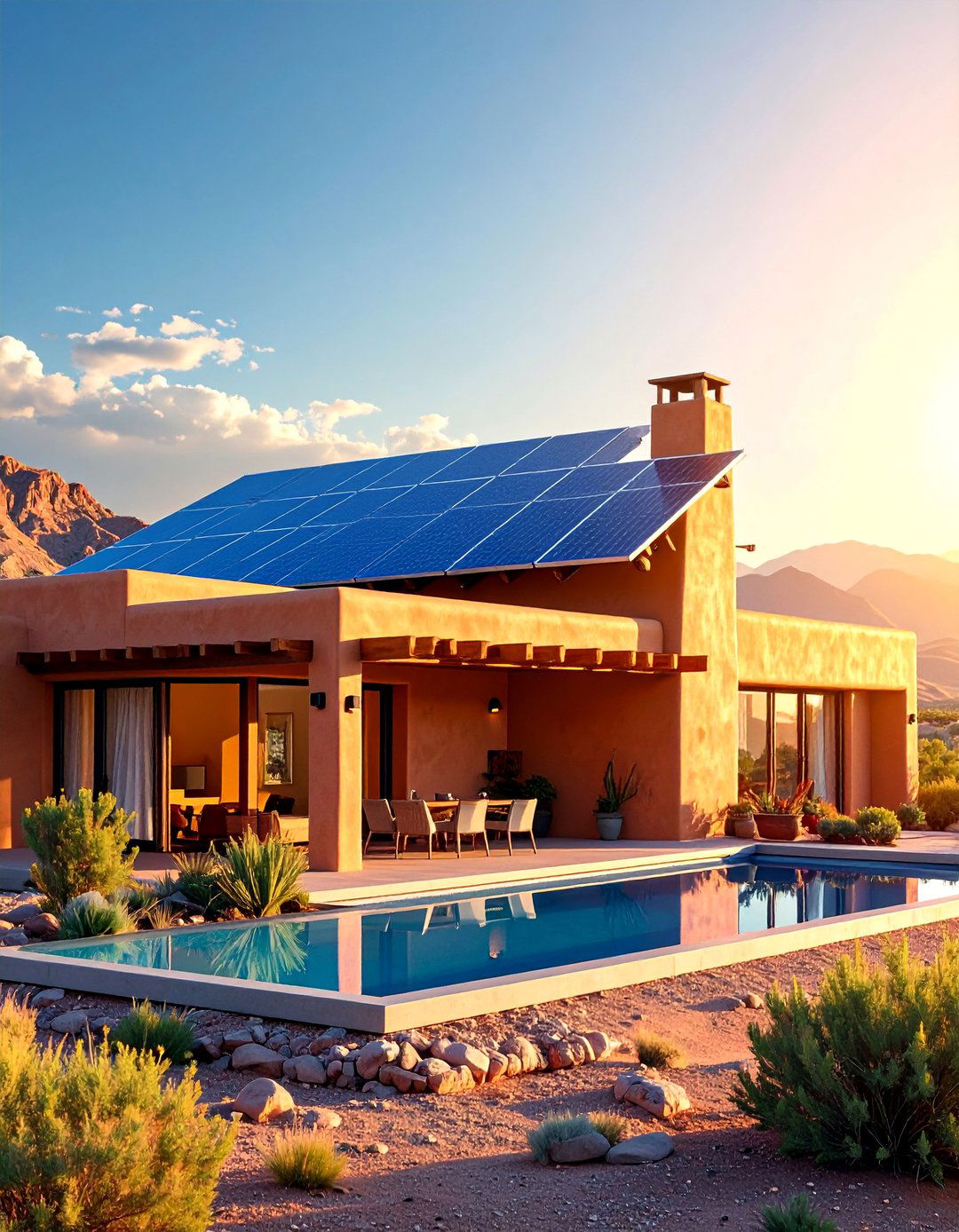
Modern adobe construction incorporates renewable energy systems while maintaining traditional architectural character through innovative integration techniques. Solar panels mount discretely on flat roof areas while respecting traditional profiles and material palettes. Passive solar design optimizes building orientation and window placement for natural heating and cooling. Adobe walls provide thermal mass that stores solar energy during day for evening comfort. Modern insulation techniques improve performance while maintaining authentic appearance through traditional stucco finishes. This approach combines ancient wisdom with contemporary technology to create highly efficient homes that honor Mexican building traditions while meeting current environmental standards through sustainable design solutions that reduce energy consumption and carbon footprint.
25. Spanish Colonial with Garden Patios

Garden patios extend living spaces outdoors while creating intimate settings for relaxation and entertaining through carefully designed landscape integration. Stone or tile paving provides weather-resistant surfaces while built-in planters accommodate colorful flowers and aromatic herbs. Covered areas with traditional tile roofs offer shade while maintaining open-air ambiance. Water features including wall fountains and reflecting pools provide cooling effects and peaceful sounds. Furniture groupings create conversation areas while dining zones accommodate outdoor meals. Garden design incorporates native plants that thrive in local conditions while providing year-round interest through seasonal flowering and foliage changes. This integration of architecture and landscape creates seamless transitions between indoor and outdoor living that celebrate Mexican traditions of family gathering and natural beauty.
Conclusion:
Mexican style house design offers timeless appeal through authentic materials, vibrant colors, and thoughtful integration of indoor and outdoor living spaces. These 25 design approaches demonstrate the versatility and enduring beauty of Mexican architectural traditions, from traditional haciendas with central courtyards to contemporary interpretations featuring modern amenities. Each style honors cultural heritage while adapting to contemporary lifestyle needs, creating homes that celebrate family, community, and connection with nature through distinctive design elements that have proven successful across centuries of Mexican architectural evolution.


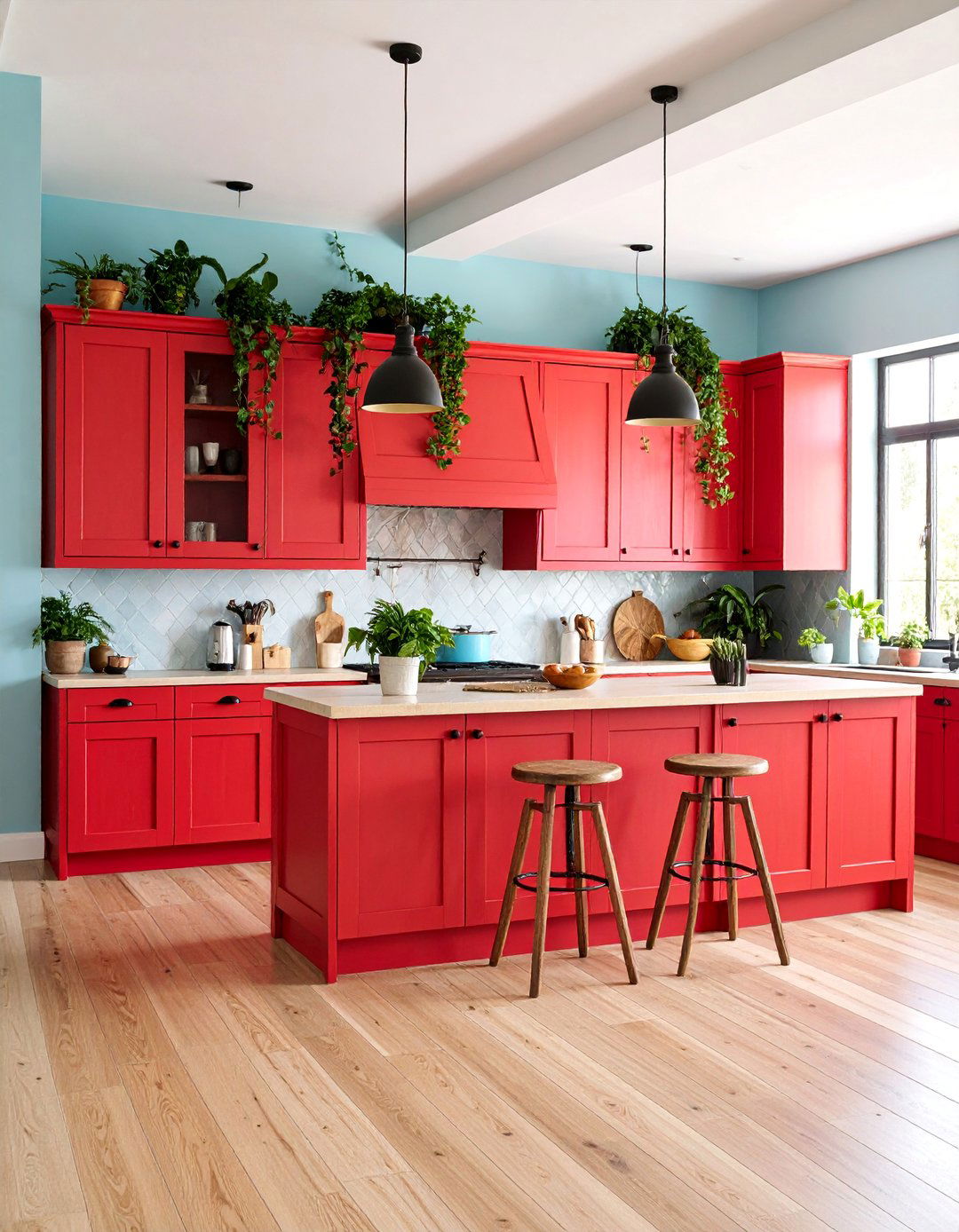

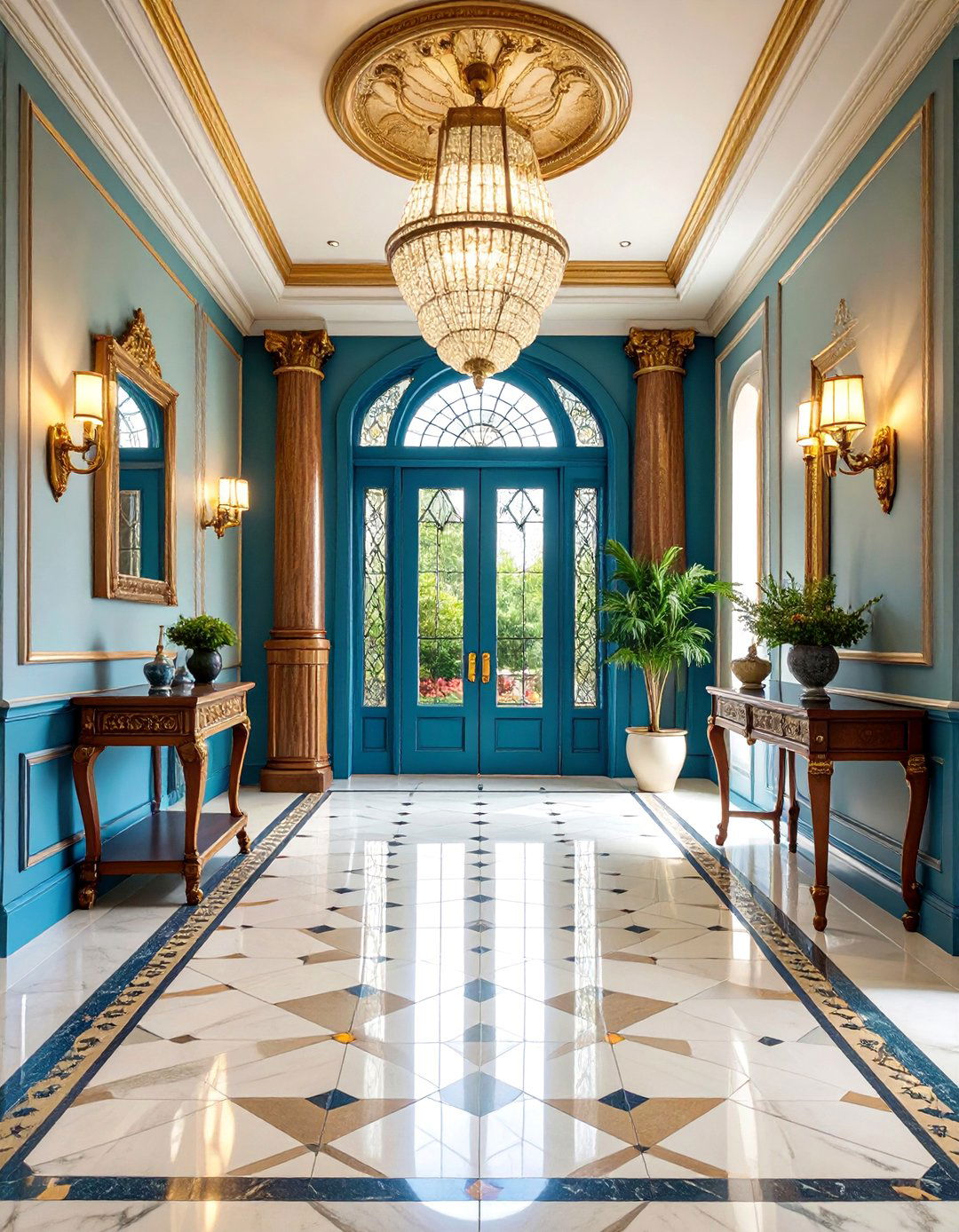

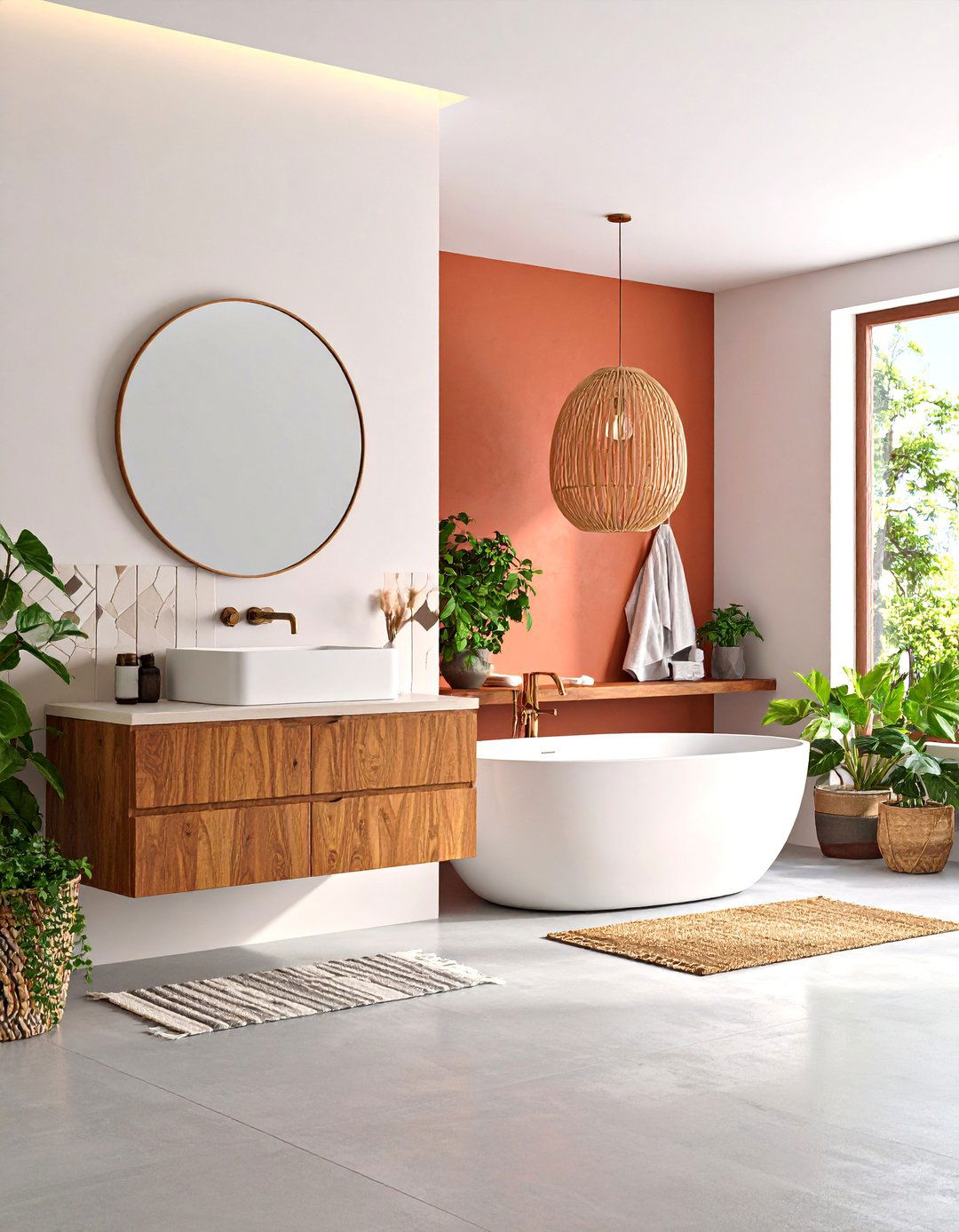

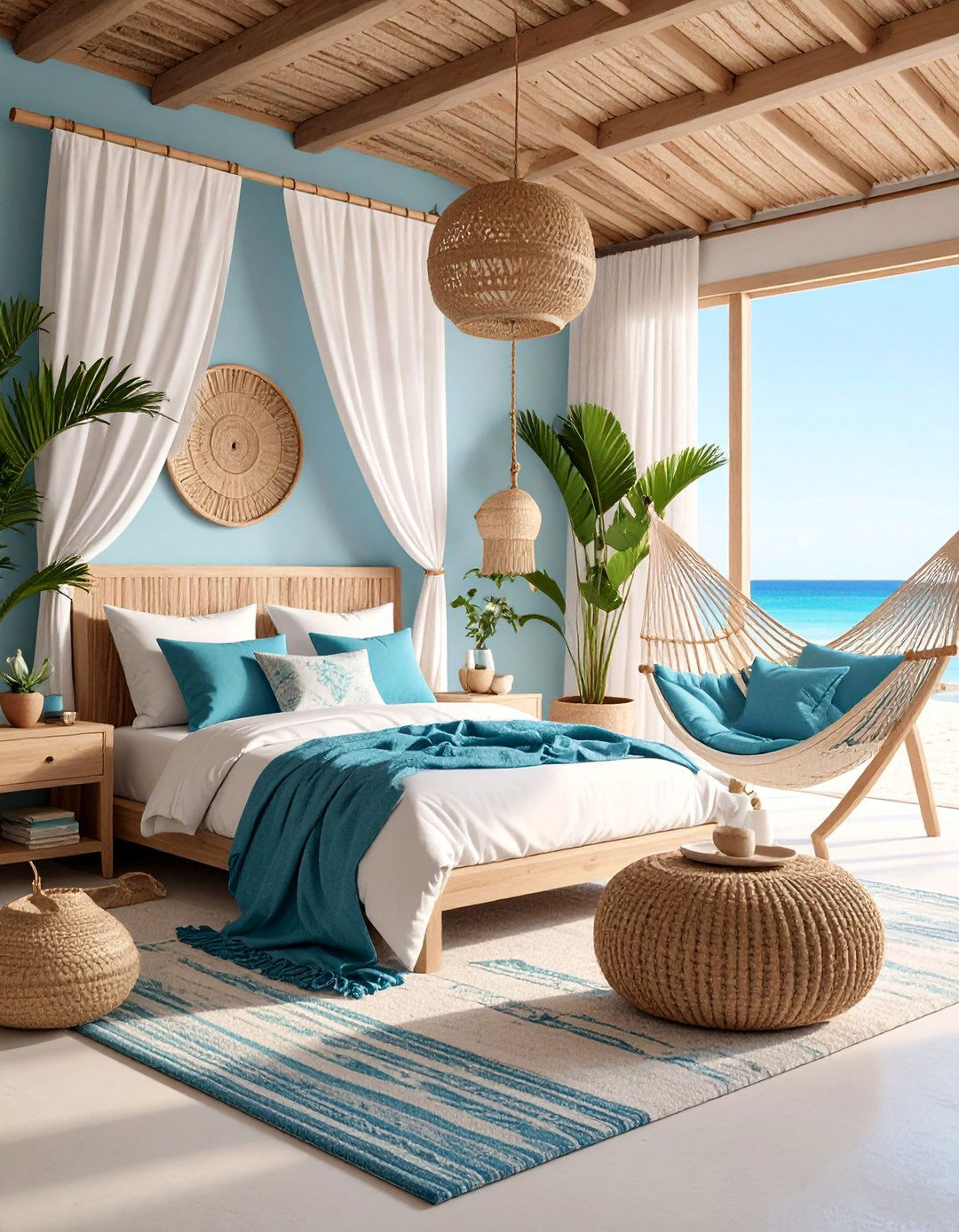
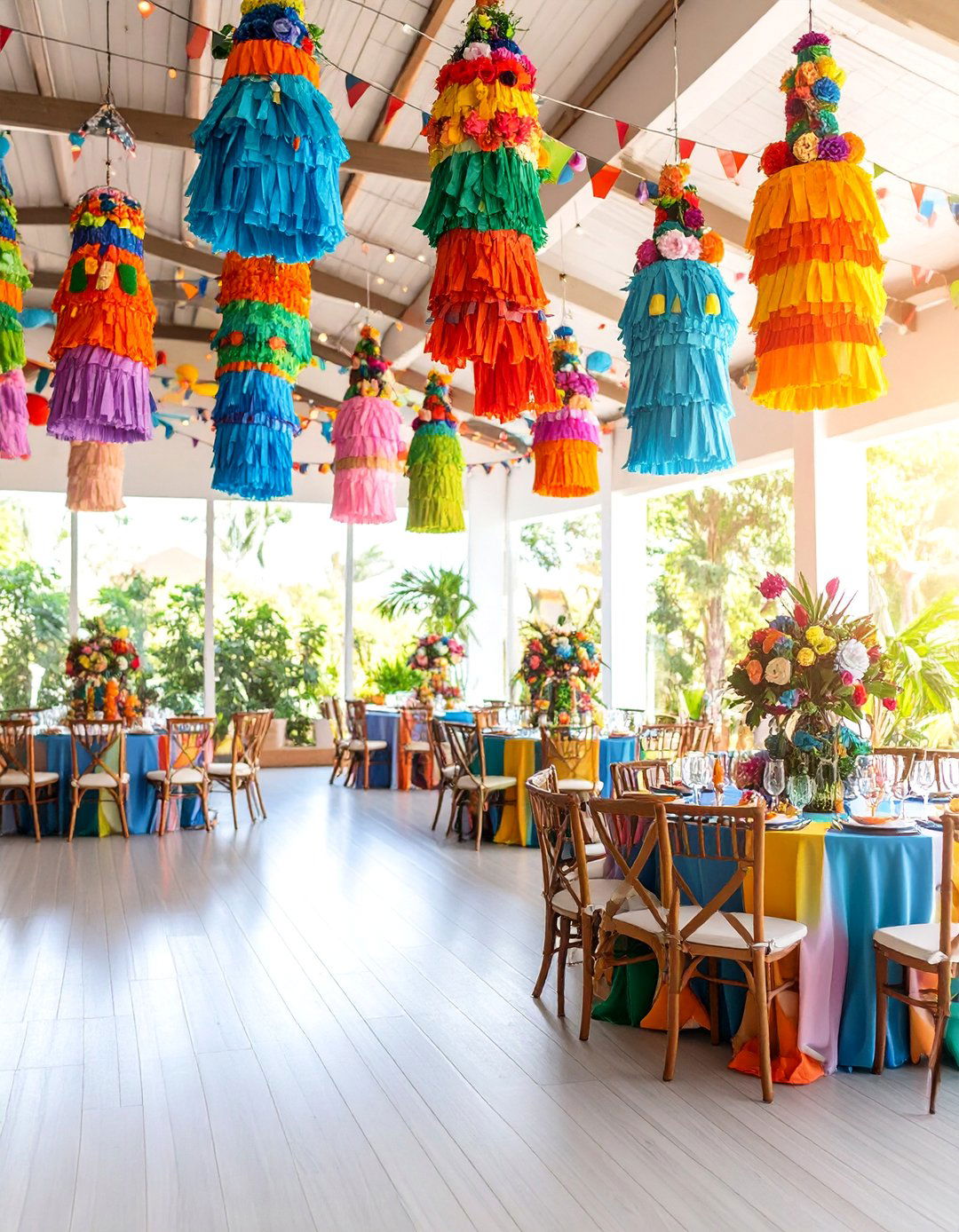
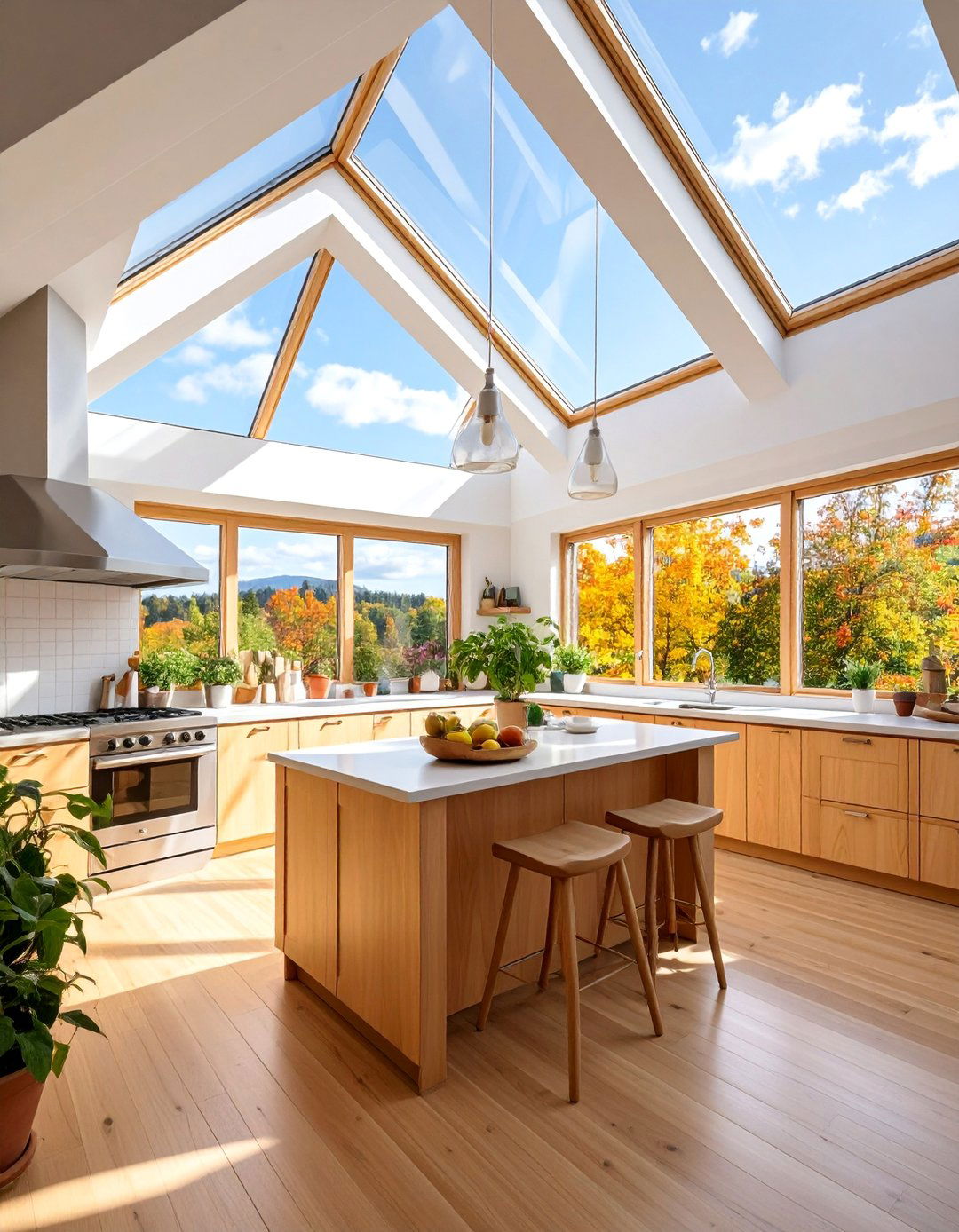



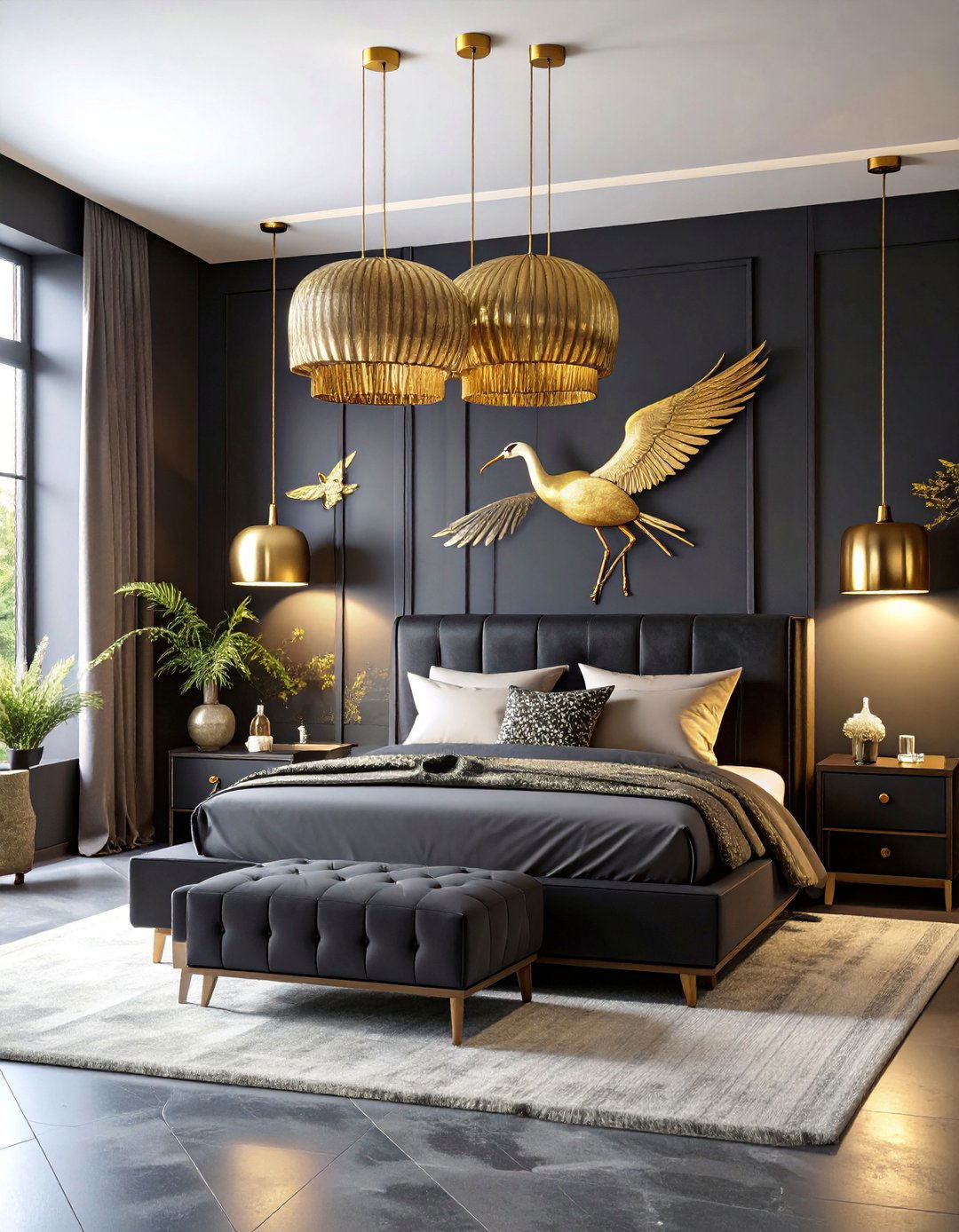

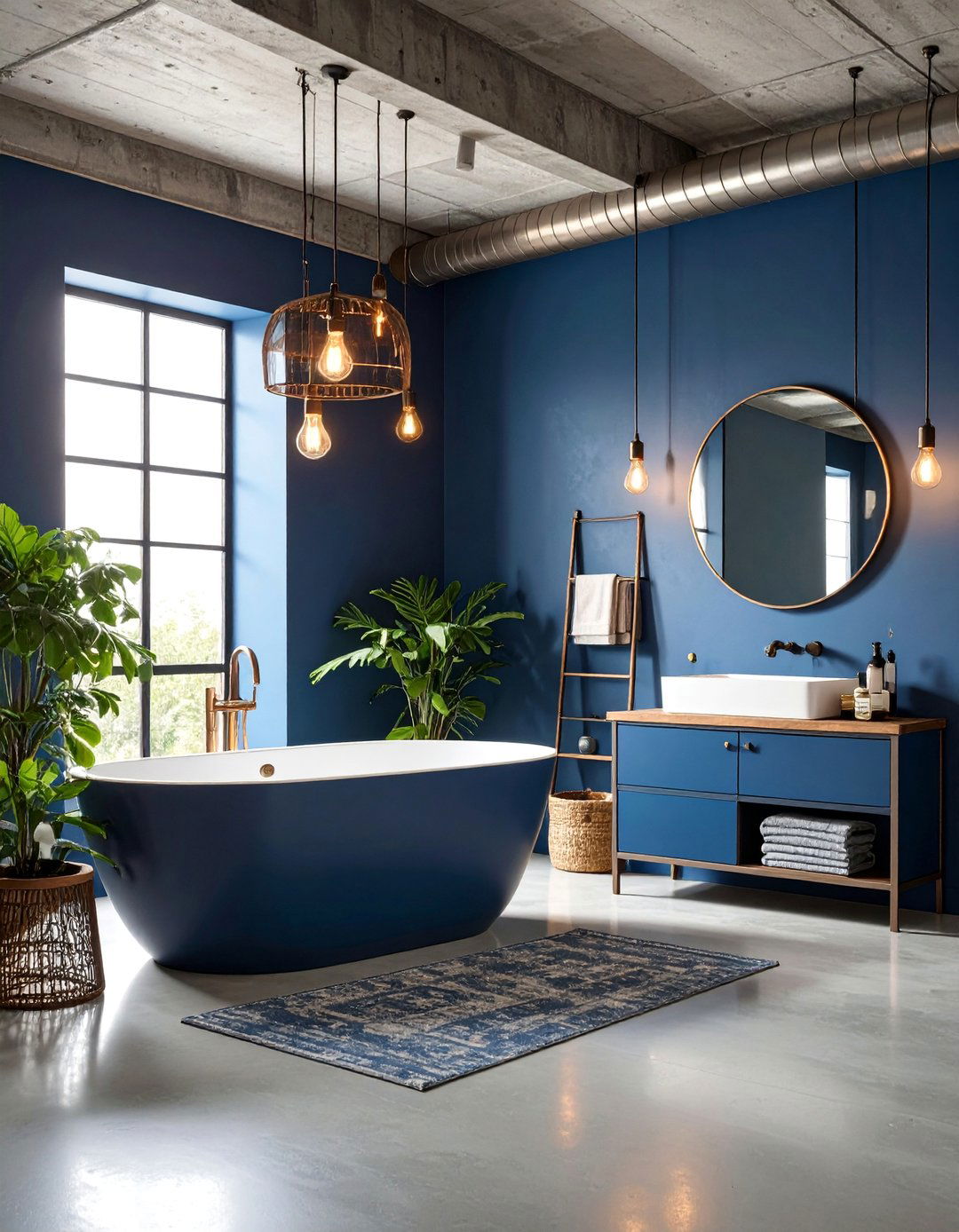
Leave a Reply